
Smarter email, faster business.
Auto-tag, parse, and respond to RFQs, quotes, orders, and more — instantly.
Trending
Trends
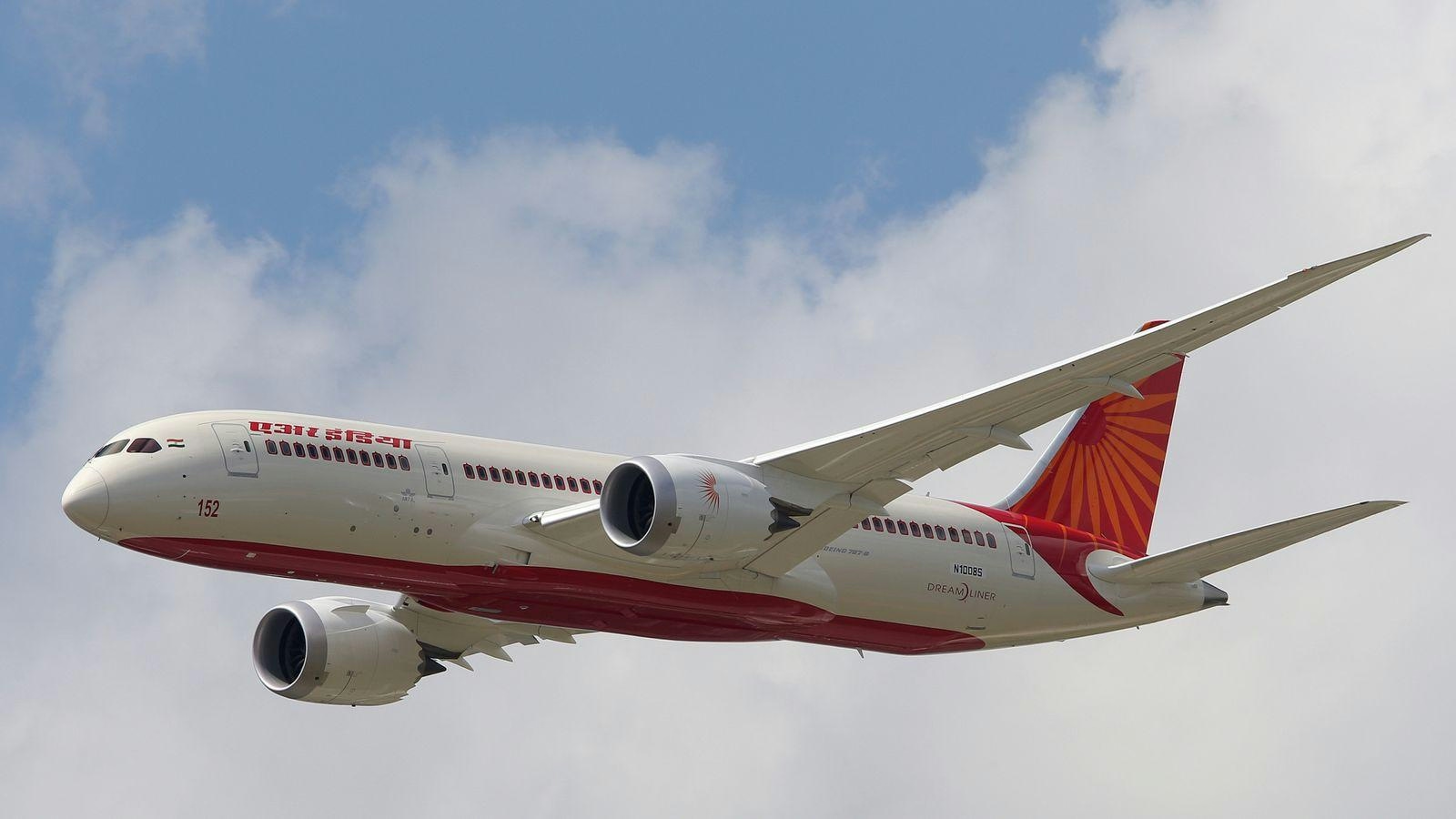
Aviation Expert Suggests Boeing 787 Software May Have Contributed to AI Crash
Aviation Expert Raises Concerns Over Boeing 787 Software in Air India Crash
Mary Schiavo, former Inspector General of the U.S. Department of Transportation and a prominent aviation attorney, has expressed serious concerns that a software-related engine thrust rollback malfunction in the Boeing 787 may have played a role in the recent crash of Air India Flight AI-171. In an exclusive interview with *The Sunday Guardian*, Schiavo highlighted a known issue previously examined by the U.S. National Transportation Safety Board (NTSB), where the aircraft’s computer systems could mistakenly reduce engine thrust during flight.
Drawing on her extensive experience overseeing major air safety investigations and representing families affected by aviation disasters, Schiavo emphasized the risks posed by Boeing’s involvement in its own crash investigations. She called on India’s Directorate General of Civil Aviation (DGCA) to undertake a comprehensive and independent inquiry, particularly given the complexity of the Boeing 787’s software systems.
Software Malfunction and Regulatory Concerns
Central to Schiavo’s warning is the Thrust Control Malfunction Accommodation (TCMA) system, mandated by the Federal Aviation Administration for the Boeing 787. The TCMA operates in conjunction with the Full Authority Digital Engine Control (FADEC) system, relying on computer inputs to determine whether the aircraft is airborne or on the ground. If these systems incorrectly classify the aircraft’s status, they may automatically adjust engine settings, potentially reducing thrust without any pilot intervention.
Schiavo referenced a 2019 incident involving Japan’s All Nippon Airways (ANA), where a similar dual engine thrust rollback occurred. The NTSB investigation into that event identified the issue as a software design flaw and led to corrective measures across the 787 fleet. According to Schiavo, such computer-triggered thrust reductions would leave distinct signatures in the flight data recorder, which investigators should carefully analyze in the case of AI-171.
Wider Implications for Boeing and the Aviation Industry
The possibility that Boeing 787 software contributed to the Air India crash is expected to heighten scrutiny from aviation regulators worldwide. Should software faults be confirmed, both Boeing and Air India could face significant legal consequences. The incident may also prompt a broader reassessment of software-related risks within the 787 fleet. Schiavo drew parallels to Boeing’s handling of the MCAS software issue, which previously sparked global controversy and regulatory intervention.
Beyond regulatory and legal ramifications, the crash carries immediate consequences for the global aviation insurance market. Industry analysts warn that insurance and reinsurance premiums could increase, particularly in India, where the aviation insurance sector has already been grappling with financial losses. Competitors may leverage the situation to highlight their own safety records and technological advancements, potentially affecting Boeing’s market position.
For Air India, the crash presents a critical challenge to its Vihaan.AI transformation program, which aims to elevate the airline to world-class status within five years. The investigation’s outcome and the airline’s subsequent response will be closely monitored by regulators, insurers, and the traveling public.
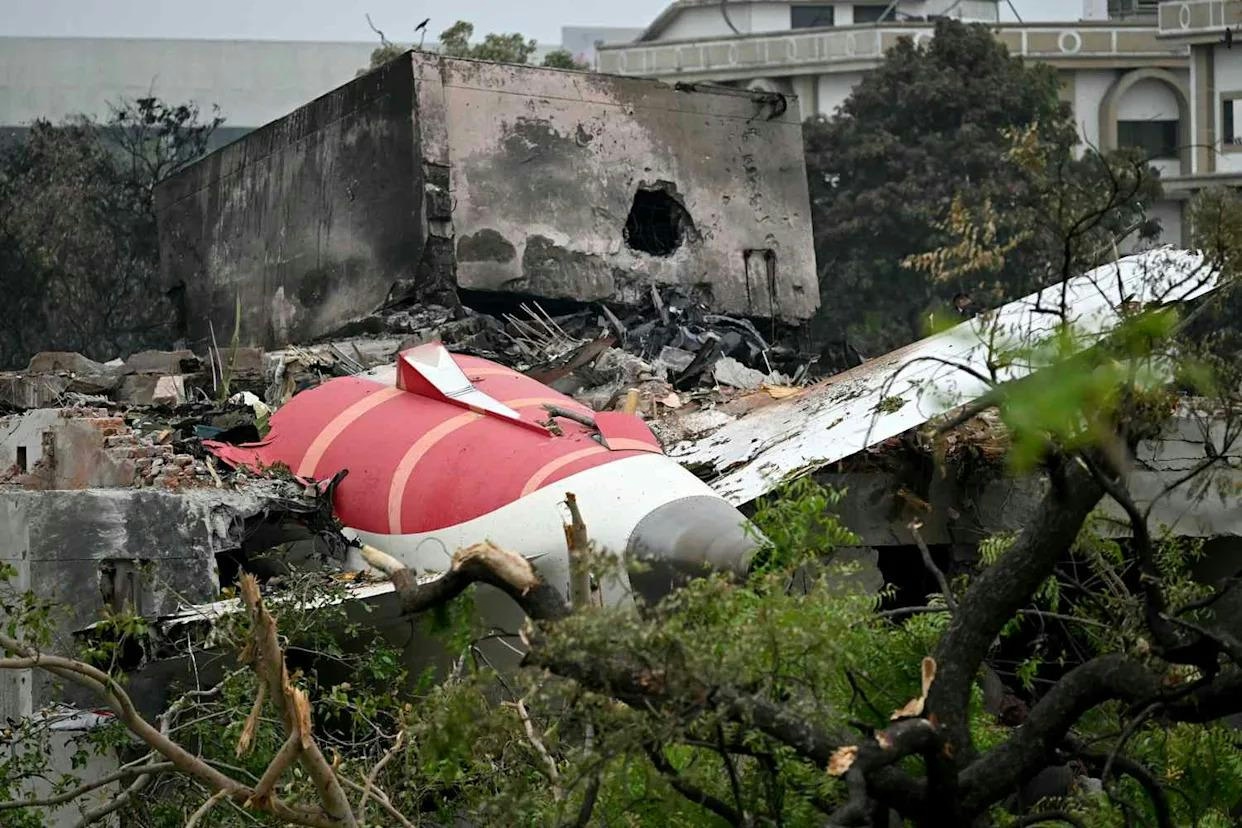
Initial Probe Points to Cause of AI 171 Crash After 15-Second Mayday Call
Initial Probe Points to Power Failure as Cause of AI 171 Crash After 15-Second Mayday Call
An initial investigation into the crash of Air India Flight AI 171 has identified a sudden power failure in the aircraft’s main electrical system shortly after takeoff as the probable cause of the disaster. The Boeing 787 Dreamliner, carrying 242 passengers and crew, crashed moments after departing Ahmedabad Airport, descending rapidly at a rate of 475 feet per minute after reaching an altitude of just 625 feet.
The Mayday Call and Immediate Response
As the aircraft began to lose altitude, Captain Sumeet Sabharwal and co-pilot Clive Kundar issued a brief but urgent “Mayday” distress call to Air Traffic Control (ATC), stating, “Mayday… no thrust, losing power, unable to lift.” Captain Sabharwal, a seasoned pilot with over 8,200 flying hours, made the call only 15 seconds before the plane impacted the ground. Despite ATC’s attempts to re-establish communication, no further contact was made, leaving a very narrow window for any emergency response.
The Mayday call, derived from the French term “m’aider” meaning “help me,” is the highest level of distress signal in aviation and has been the international standard since 1927. It is reserved for life-threatening emergencies requiring immediate assistance.
Investigation and Technical Findings
India’s Aircraft Accident Investigation Bureau (AAIB) is leading an independent inquiry into the crash. Investigators have recreated the incident using flight simulators, replicating conditions such as the landing gear being down and wing flaps engaged. These simulations did not result in a crash, indicating that a more critical failure likely occurred.
Evidence suggests a possible dual engine failure, as the aircraft’s emergency power system, known as the Ram Air Turbine (RAT), was deployed by the pilots. The activation of the RAT typically signals a loss of engine power or a complete electrical failure. Although dual engine failures are exceedingly rare, investigators have not dismissed this possibility. The ongoing recovery and analysis of the second “black box” flight recorder are expected to provide more conclusive information.
Broader Implications and Ongoing Inquiry
The crash carries significant consequences for Air India, including potential reputational damage, financial losses, and operational disruptions. It is also expected to trigger heightened scrutiny and possible regulatory reforms within India’s aviation sector. Boeing, as the manufacturer of the aircraft, may face reputational and legal challenges as the investigation progresses.
CCTV footage widely circulated online shows the aircraft taking off from Runway 23 before unexpectedly descending and veering over a residential area, followed by a massive explosion and a plume of black smoke at the crash site. Flight tracking data confirmed that the aircraft lost contact just seconds into its planned 4,200-mile journey to London’s Gatwick Airport.
Investigators are also reviewing a previous takeoff incident involving the same route to Gatwick from five years ago as part of their efforts to determine the full cause of the crash. The findings from this ongoing investigation are anticipated to influence future safety protocols and regulatory oversight in both Indian and international aviation.
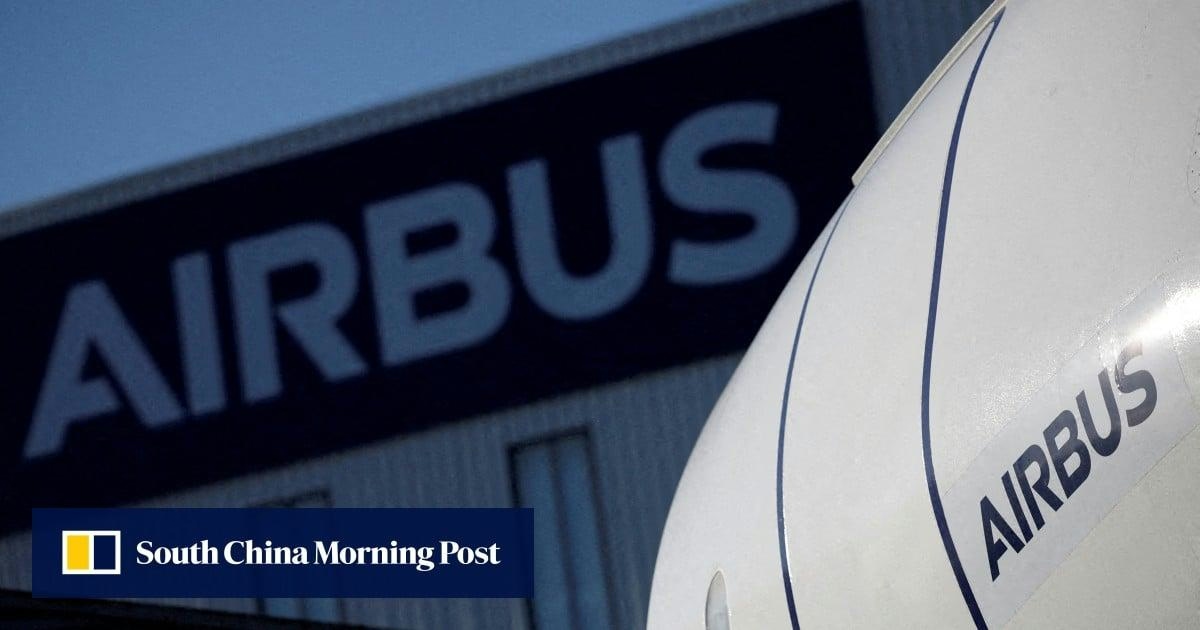
China edges closer to Airbus mega-deal, leaving Boeing out in the cold: analysts
China Nears Major Airbus Deal Amid Boeing’s Decline in Chinese Market
China is reportedly on the verge of finalizing a substantial aircraft order with European aerospace leader Airbus, potentially acquiring between 100 and 200 new jets. This development would further solidify Europe’s position as China’s preferred supplier of commercial aircraft, despite the continued reliance of some Chinese airlines on American manufacturer Boeing.
Shifting Dynamics in China’s Aviation Sector
Boeing, which once held a dominant position in the Chinese market, has not secured a significant order from China since 2017. This prolonged absence coincides with escalating trade tensions between Beijing and Washington, compounded by a series of challenges for the US company. These include labor strikes, financial setbacks, and high-profile accidents such as the recent Air India crash involving a Boeing 787 Dreamliner, which resulted in at least 270 fatalities.
Industry analysts suggest that China’s potential Airbus order could inflict a serious blow to Boeing’s market share as the country’s aviation sector continues to grow rapidly. Airbus’s European base may provide logistical and diplomatic advantages for Chinese buyers increasingly cautious of geopolitical risks and safety concerns associated with US suppliers. Concurrently, China is advancing production of its domestically developed Comac C919 passenger jet, further diversifying its fleet away from American manufacturers.
Brian Yang Bo, an aviation industry veteran and independent consultant, noted, “Buying from Airbus makes a lot of sense now, both commercially and diplomatically. But carriers with Boeing-only fleets are caught on the back foot.”
Market Implications and Future Prospects
The market has already reacted to the news, with Airbus shares rising amid expectations of increased orders. Conversely, Boeing’s position could deteriorate further if it remains excluded from China’s recent aircraft procurement activities. Some analysts argue that Boeing may need to renegotiate terms or explore alternative markets to compensate for the potential loss of Chinese business.
As China moves closer to securing a landmark deal with Airbus, the divide between the two aerospace giants in the Chinese market appears set to widen, presenting Boeing with mounting challenges in one of the world’s most vital aviation arenas.
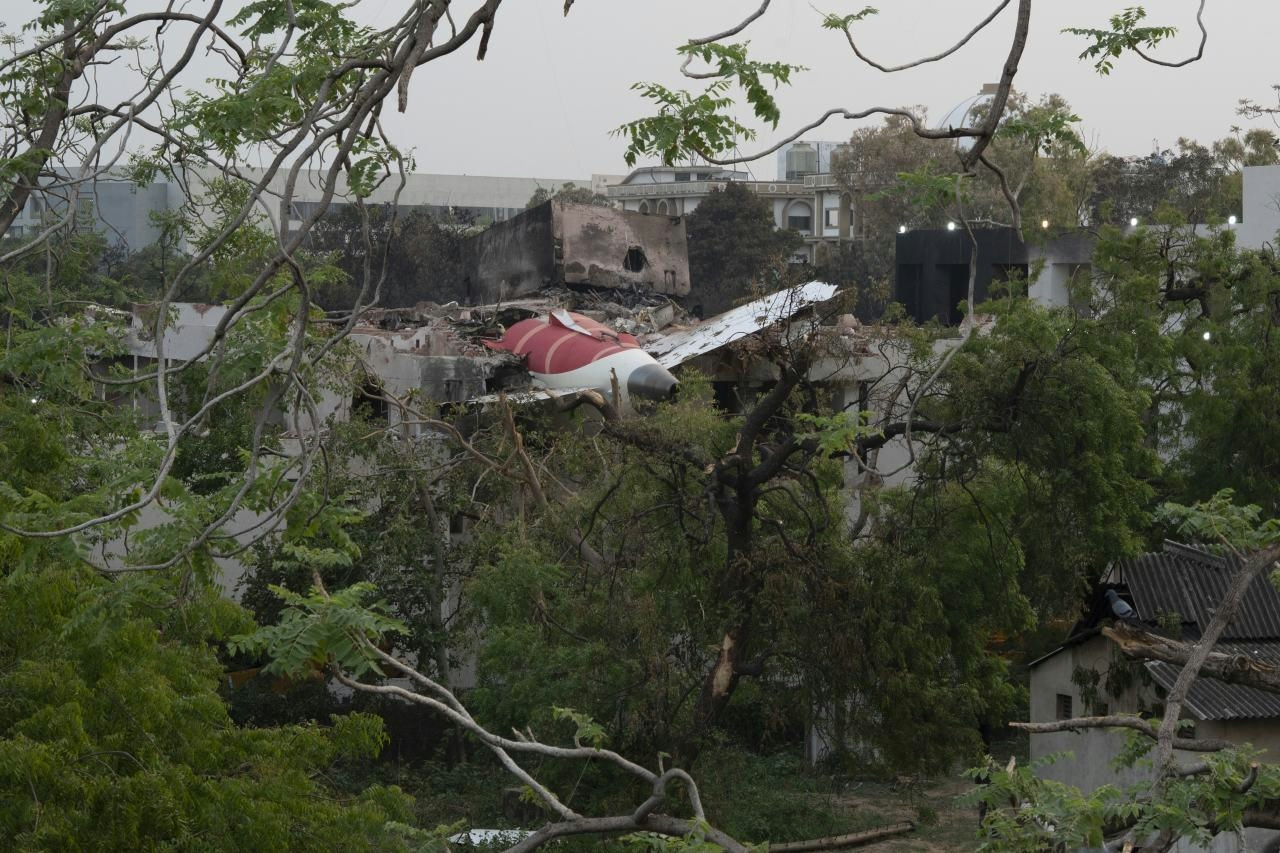
Investigators Examine Dual-Engine Failure in Air India Crash
Investigators Examine Dual-Engine Failure in Air India Crash
More than two weeks after the tragic crash of an Air India Boeing 787, which claimed the lives of 241 of the 242 people on board, investigators are concentrating on the possibility of a dual engine failure as a critical factor that may have prevented the aircraft from maintaining flight. The aircraft went down shortly after taking off from Ahmedabad on June 12, struggling to gain altitude before crashing into nearby buildings and erupting in flames. The disaster also resulted in the deaths of nineteen individuals on the ground.
Focus on Technical Malfunction and Flight Simulation
Video footage captured the aircraft’s brief and troubled ascent, showing a rapid descent soon after takeoff. Sources familiar with the investigation report that Air India pilots have since attempted to replicate the flight’s conditions in a simulator, including scenarios with deployed landing gear and retracted wing flaps. These simulations, however, did not fully account for the crash, prompting investigators to intensify their focus on a possible technical malfunction. Notably, the deployment of the plane’s emergency-power turbine just seconds before impact suggests that both engines may have failed simultaneously.
Operational Impact and Ongoing Investigation
The crash has caused significant operational disruptions for Air India, which is currently engaged in its Vihaan.AI transformation program aimed at modernizing the airline. In response to the incident, the carrier has canceled eight international flights operated by Boeing 787-8 Dreamliners as a precautionary measure, while comprehensive safety inspections are underway. The tragedy has raised serious concerns about the airline’s reputation and the potential ramifications for its ongoing reform initiatives.
Investigators continue to analyze the aircraft’s black boxes and cockpit voice recordings to reconstruct the precise sequence of events leading to the disaster. The probe is also reviewing maintenance records and technical data to determine whether mechanical failures or systemic issues contributed to the crash.
Broader Implications for Aviation Safety
Beyond the immediate impact on Air India, the crash has drawn attention to broader challenges facing India’s rapidly growing aviation sector, as well as renewed scrutiny of Boeing’s aircraft safety. Industry experts caution that the investigation’s findings could have significant implications for safety protocols and regulatory oversight across the region.
Authorities have emphasized the importance of a thorough and transparent investigation to restore public confidence in both the airline and the wider aviation industry. The inquiry remains ongoing as officials work to uncover the full circumstances surrounding this devastating event.
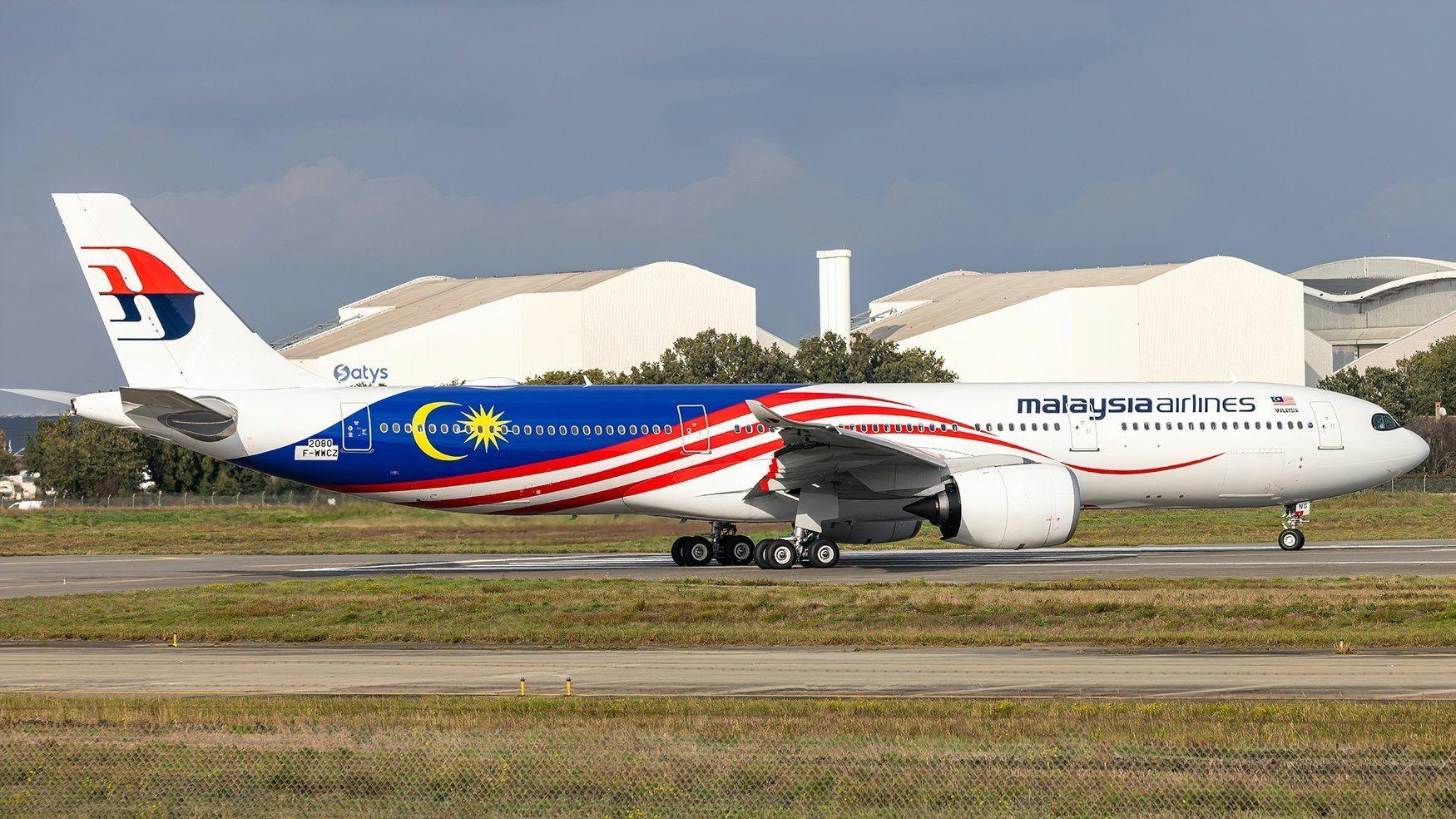
Malaysia Aviation Group Expected to Confirm Airbus A330neo Order During Anwar’s Paris Visit
Malaysia Aviation Group Set to Confirm Airbus A330neo Order During Anwar’s Paris Visit
Strategic Fleet Expansion
Malaysia Aviation Group (MAG), the parent company of Malaysia Airlines, is expected to finalize a significant order for additional Airbus A330neo long-haul aircraft during Prime Minister Datuk Seri Anwar Ibrahim’s forthcoming visit to Paris, according to industry insiders. This anticipated confirmation represents a pivotal advancement in MAG’s ongoing fleet renewal strategy. In 2022, the group placed an order for 20 A330neo jets and secured options for an additional 20. MAG’s Managing Director, Datuk Captain Izham Ismail, recently indicated that the company is actively considering exercising these options, potentially expanding its fleet by another 20 A330neos.
Following this potential acquisition, MAG is likely to conduct a competitive evaluation among leading aircraft manufacturers—including Airbus, Boeing, and Embraer—for larger widebody aircraft such as the Airbus A350, Boeing 787, or Boeing 777X. This approach reflects the group’s commitment to modernizing its fleet with a mix of efficient, long-range aircraft tailored to its operational needs.
Operational and Market Considerations
Although none of the manufacturers involved have publicly commented on the prospective deal, industry analysts highlight the A330neo’s operational efficiency and established performance record as key factors enhancing its appeal. Airlines such as Virgin Atlantic have demonstrated the aircraft’s reliability and cost-effectiveness on long-haul routes. Airbus has recently upgraded the A330neo’s capabilities, including an increased maximum take-off weight, further bolstering its suitability for extended operations.
Nonetheless, finalizing the order entails significant challenges. MAG must secure substantial financial resources and ensure the smooth integration of new aircraft into its existing operations. This transition demands meticulous planning to uphold service reliability and operational efficiency during the fleet expansion.
Market sentiment toward the potential order is expected to be favorable, mirroring broader optimism within the aviation sector. Leading manufacturers, including Boeing, Airbus, and Embraer, have expressed confidence in sustained growth in the airliner market, indicating a competitive yet robust environment for new aircraft acquisitions.
If confirmed during Prime Minister Anwar’s visit to Paris, the deal will underscore Malaysia’s dedication to modernizing its national carrier’s fleet and enhancing its competitiveness in the increasingly challenging long-haul aviation market.
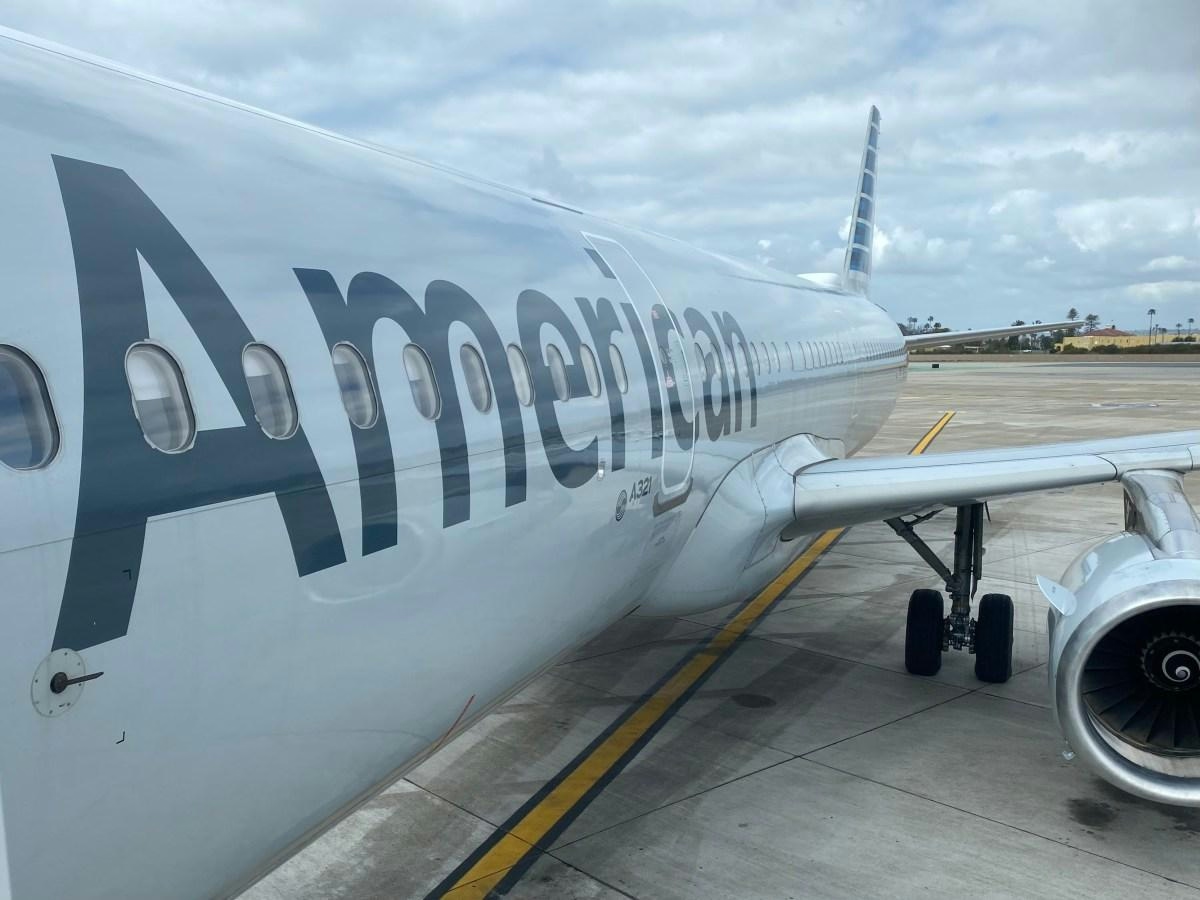
American Airlines Airbus A321 Returns to Service After Engine Issue Led to Overweight Landing in Phoenix
American Airlines Airbus A321 Returns to Service Following Engine Malfunction and Overweight Landing in Phoenix
An American Airlines Airbus A321-200 has resumed operations after an emergency landing at Phoenix Sky Harbor International Airport (PHX) caused by an engine malfunction shortly after departure. The incident occurred on Wednesday, June 25, involving flight AA1823, which was en route from Phoenix to Charlotte Douglas International Airport (CLT) in North Carolina.
Incident Overview
The aircraft, carrying 201 passengers and crew, departed Phoenix at 12:27 p.m. local time, approximately 12 minutes behind schedule. Shortly after takeoff, the flight crew reported an overheating issue with the number 2 engine. Passengers and witnesses described hearing a loud boom accompanied by smoke and visible flames emanating from the engine in flight. In response, the crew promptly shut down the affected engine as a precautionary measure and declared an emergency, requesting an immediate return to Phoenix.
Air traffic control directed the aircraft to climb and maintain an altitude of 5,000 feet while executing a turnaround for landing on runway 8, selected due to prevailing wind conditions. However, operating on a single engine amid the intense Arizona heat, the aircraft struggled to gain altitude, reaching only about 4,000 feet before commencing its approach.
Emergency Landing and Response
As the aircraft prepared to land, the pilots communicated the necessity of an overweight landing, indicating that the aircraft was heavier than its maximum certified landing weight due to unburned fuel. They also requested that fire and rescue services be on standby, citing concerns about hot brakes and the earlier engine overheating.
The flight crew informed air traffic control:
*"We're gonna go ahead right now and declare an emergency for overweight landing. [...] And for Fire Rescue, for 1823, just be prepared, we're gonna be an overweight landing. Our brakes may be hot. And we had an overheat on the right hand engine, engine 2."*
Despite these challenges, the aircraft landed safely at Phoenix Sky Harbor, vacated the runway without incident, and was met by emergency personnel for inspection. The Federal Aviation Administration (FAA) confirmed the safe landing and acknowledged the crew’s report of the engine issue.
Aftermath and Return to Service
Following a comprehensive inspection and any necessary maintenance, the Airbus A321 returned to service on Friday, June 27. American Airlines has reported no injuries among passengers or crew. While there has been no public commentary on market reactions or competitor responses, the airline has emphasized its commitment to passenger safety and adherence to regulatory standards.
This incident highlights the critical importance of crew training, emergency preparedness, and the rigorous safety protocols that underpin commercial aviation operations.
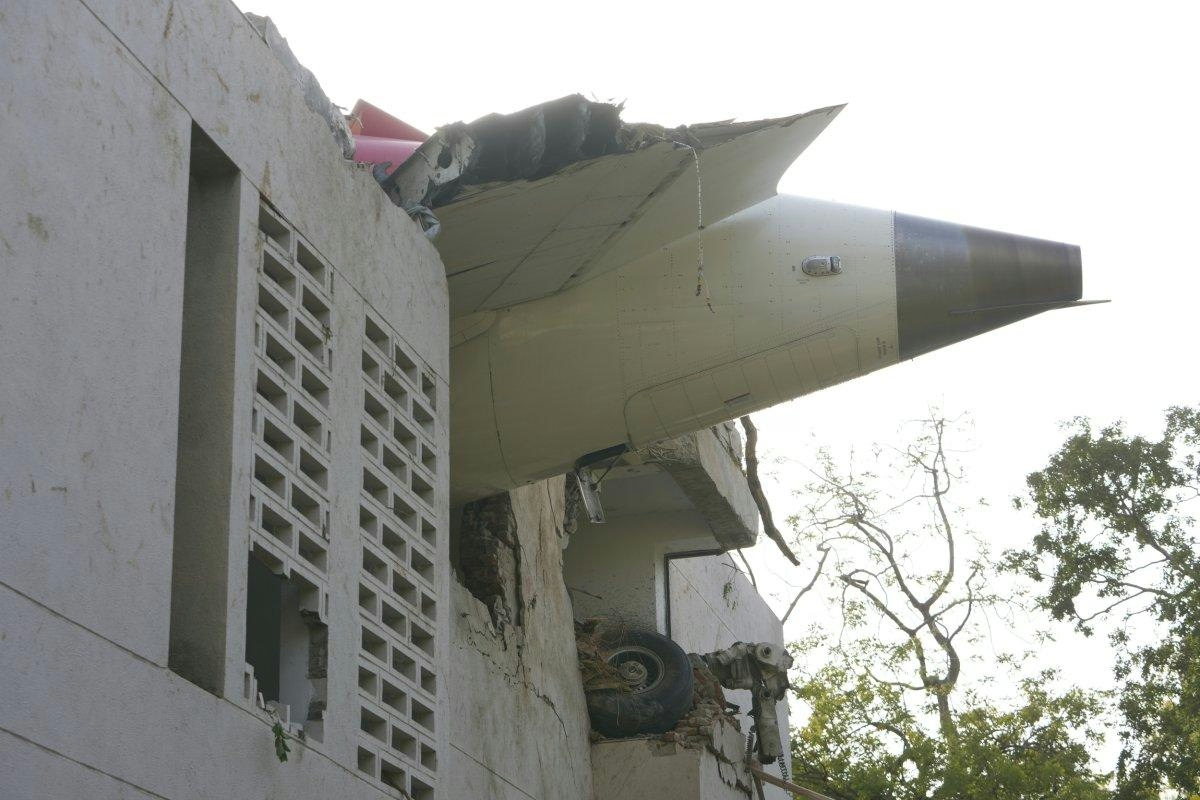
Another Air India Plane Descends 900 Feet After Takeoff, DGCA Investigates Following AI 171 Crash
Air India Faces Renewed Safety Scrutiny Following Second Inflight Incident
Just 38 hours after the tragic crash of Air India flight AI 171 in Ahmedabad, the airline has been confronted with another serious safety event. On June 14, Air India flight AI 187, operating a Boeing 777 from Delhi to Vienna, experienced a sudden and alarming loss of altitude shortly after takeoff, prompting an immediate investigation by India’s Directorate General of Civil Aviation (DGCA).
Details of the Incident
The aircraft, registered VT-ALJ, encountered severe thunderstorm conditions over Delhi at approximately 2:56 am. During the initial climb, the cockpit was alerted by a “stick shaker” warning—a critical signal indicating an imminent aerodynamic stall—accompanied by two “don’t sink” cautions from the Ground Proximity Warning System (GPWS). These warnings signaled a dangerous and abnormal descent of nearly 900 feet. Despite the severity of the situation, the flight crew successfully regained control, and the aircraft completed its journey to Vienna, landing safely after a nine-hour flight.
Subsequent analysis of flight data revealed multiple onboard warnings that were not fully disclosed in the initial pilot report. While the crew’s preliminary account mentioned only a “stick shaker due to turbulence after takeoff,” the flight data recorder indicated additional stall and GPWS alerts, underscoring the gravity of the event. In response, both pilots have been temporarily removed from flying duties, and Air India’s head of safety has been summoned for questioning as part of the ongoing DGCA investigation.
Implications for Air India and Indian Aviation
This incident compounds the challenges facing Air India amid heightened scrutiny following the AI 171 crash, which resulted in several fatalities and raised urgent concerns about the airline’s safety culture and operational standards. The airline’s ambitious Vihaan.AI transformation program, designed to position Air India as a world-class global carrier, now faces significant reputational and operational hurdles.
The DGCA has intensified its oversight of Air India’s fleet and safety protocols in light of these events. Although recent inspections of the airline’s Boeing 787 fleet did not uncover major safety deficiencies, the recurrence of critical inflight warnings has reignited broader concerns regarding Boeing aircraft safety and the robustness of India’s aviation regulatory framework. These developments carry potential ramifications beyond Air India, with possible impacts on inbound tourism and business travel to India.
An Air India spokesperson confirmed that the pilot’s initial report was promptly shared with the DGCA in accordance with regulatory requirements. The spokesperson added that the pilots involved have been off-rostered pending the outcome of the investigation.
On June 17, the DGCA publicly expressed concern over “recent maintenance-related issues” and directed Air India to improve coordination among its engineering, operations, and ground handling divisions. The regulator emphasized the urgent need for a renewed focus on safety as the airline navigates this turbulent period.
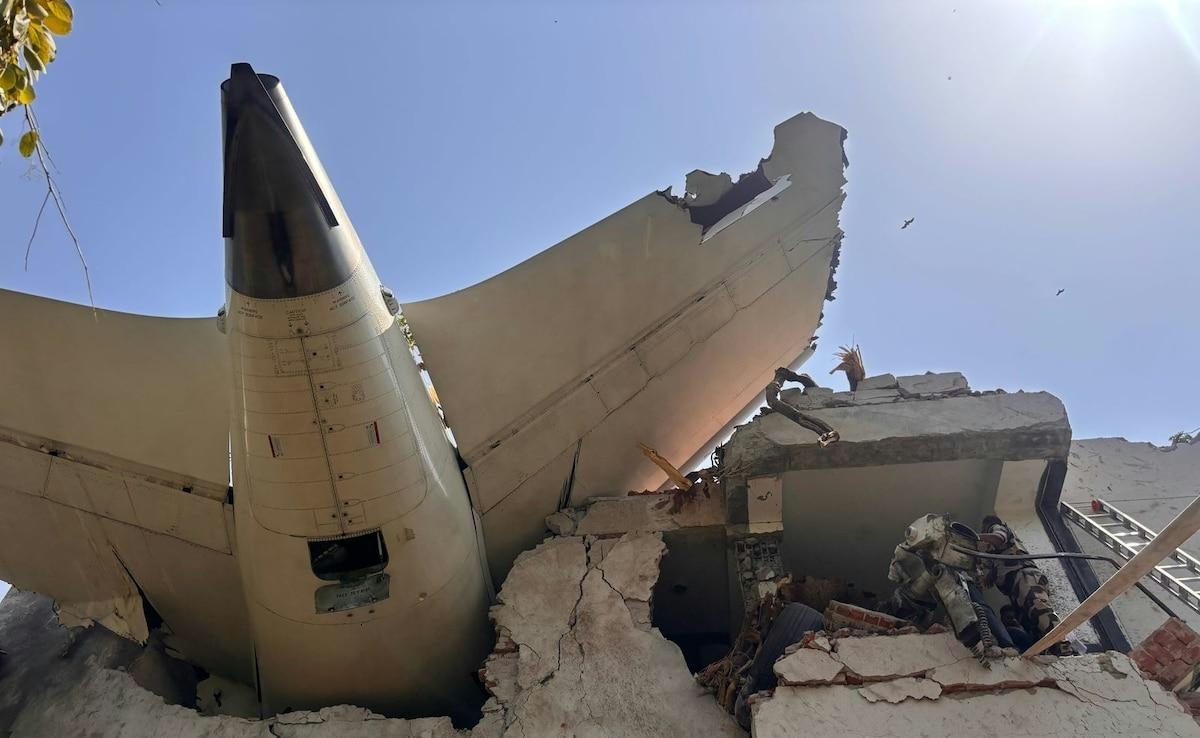
AI-Generated Content Spreads Misinformation After Air India Crash
AI-Generated Content Fuels Misinformation Surge After Air India Crash
In the wake of the Air India Boeing 787 crash near Ahmedabad, which tragically claimed 275 lives, a surge of AI-generated misinformation has complicated efforts to deliver accurate updates and intensified public anxiety. The disaster, which occurred on June 12, has been followed by a proliferation of false reports and manipulated media across social platforms and news outlets, challenging authorities and experts alike.
The Spread of False Reports and Manipulated Media
Shortly after the crash, a preliminary investigation report surfaced within aviation circles, appearing official and replete with technical aviation terminology. However, experts quickly identified the document as a product of generative AI, repurposing details from an unrelated 2024 LATAM Airlines incident in South America. Despite Indian authorities promptly debunking the report, several news organizations had already disseminated misleading headlines, further confusing the public and even some aviation professionals.
The misinformation extended beyond fabricated reports. Digital fraud detection firm mFilterIt uncovered numerous AI-generated images and videos falsely depicting the crash aftermath, alongside fraudulent fundraising campaigns exploiting the tragedy. Amit Relan, co-founder and CEO of mFilterIt, highlighted a disturbing pattern of bad actors leveraging AI and social media to spread misinformation and commit fraud during sensitive events such as the Air India Flight 171 crash. He underscored the urgent need for public education to help individuals discern legitimate content from manipulated material and called for enhanced collaboration among technology platforms, law enforcement agencies, and industry stakeholders to combat these threats.
Impact on Public Perception and Official Response
The rapid dissemination of false information has heightened public panic and intensified pressure on authorities to maintain transparent communication. The International Civil Aviation Organization (ICAO) emphasized the critical role of effective media engagement in preserving public trust and ensuring the accuracy of information during aviation crises. According to the ICAO, a well-planned and executed communication strategy is vital to minimizing negative publicity and ensuring timely, factual reporting.
India’s civil aviation ministry confirmed that the Aircraft Accident Investigation Bureau (AAIB) has successfully retrieved data from the cockpit voice recorder (CVR) and flight data recorder (FDR), which are currently undergoing analysis in New Delhi. The recovery and examination of these recorders are expected to be pivotal in advancing the investigation.
The incident has also drawn scrutiny across related sectors. Market analysts are monitoring the aviation insurance and reinsurance markets for potential repercussions, while Air India’s ongoing transformation program faces renewed challenges amid the crisis. Competitors have responded by emphasizing their own safety protocols and communication strategies to reassure passengers and sustain operational momentum.
John Cox, a former airline pilot and CEO of Safety Operating Systems, stressed the necessity for a fundamental shift in crisis communication. He described the current situation as the most extensive case of misinformation witnessed during any aviation accident. Cox advocated for daily briefings by the AAIB, similar to practices adopted by agencies worldwide, noting that in the absence of reliable information, misinformation inevitably fills the void.
As the investigation proceeds, authorities and industry stakeholders confront the ongoing challenge of countering misinformation, restoring public confidence, and ensuring that accurate information prevails.
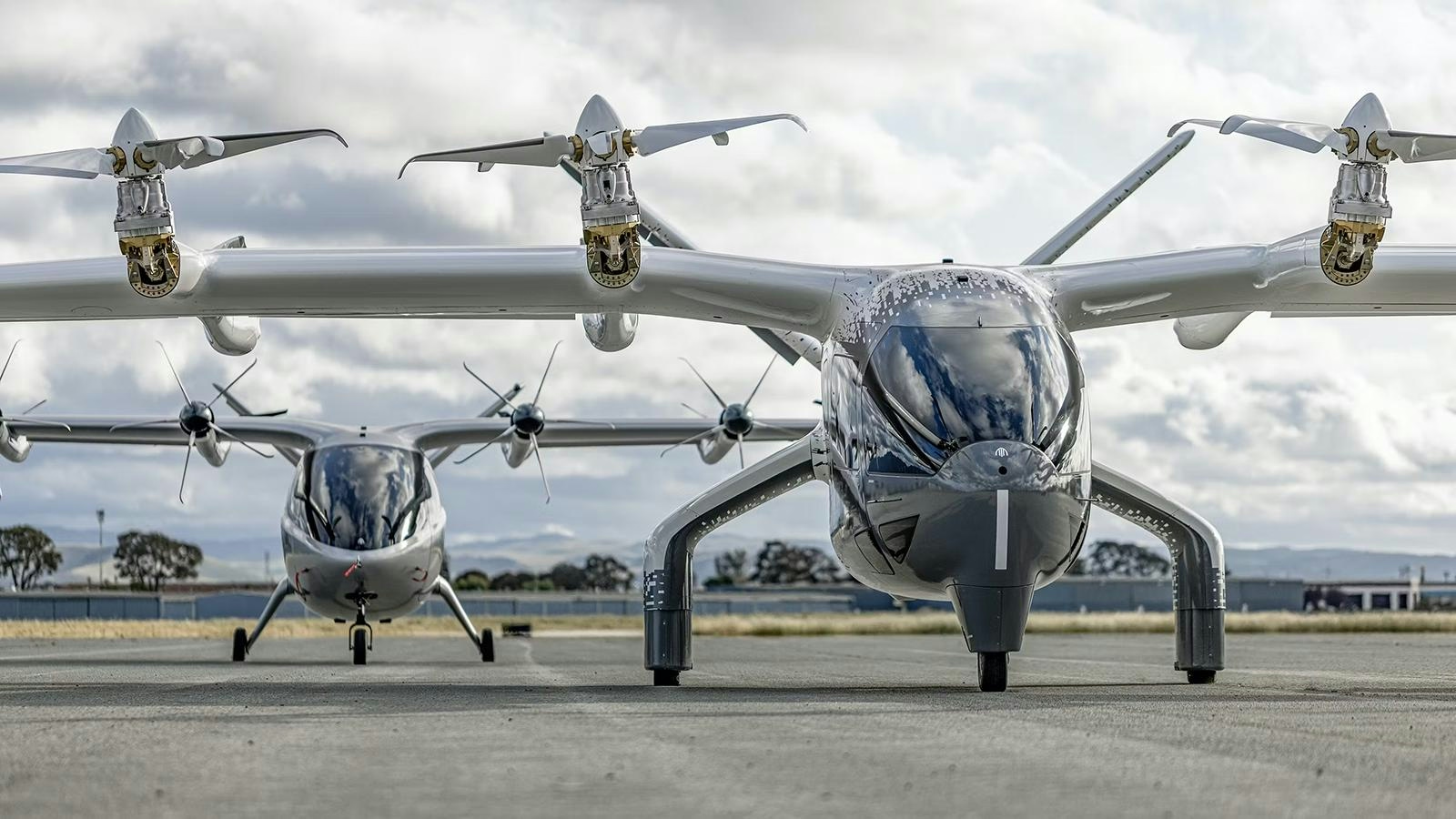
Archer’s Midnight Air Taxi Completes First Flight in UAE Desert
Archer’s Midnight Air Taxi Completes First Flight in UAE Desert
Archer Aviation’s Midnight electric vertical takeoff and landing (eVTOL) aircraft has successfully completed its inaugural flight at Al Bateen Executive Airport in Abu Dhabi. This milestone represents a crucial step in the company’s ambition to launch commercial air taxi services within the United Arab Emirates and to expand its footprint across the Middle East.
Testing in Challenging Conditions
The test flight was conducted with the support of the Smart and Autonomous Systems Council (SASC) and witnessed by senior officials from the UAE General Civil Aviation Authority (GCAA), the Abu Dhabi Investment Office (ADIO), the Integrated Transport Centre, Abu Dhabi Aviation, and Abu Dhabi Airports, alongside representatives from Archer’s regional partners. The operation focused on evaluating the Midnight aircraft’s vertical takeoff and landing capabilities under the demanding environmental conditions typical of the UAE, including high temperatures, humidity, and dust exposure. These factors are critical to ensuring the safety and reliability of urban air mobility solutions in the region.
H.E. Badr Al-Olama, Director General of ADIO, highlighted the significance of the flight, stating, “This flight marks a significant step towards realising Abu Dhabi’s ambition to lead the world in advanced urban air mobility.” He further noted that through the Smart and Autonomous Vehicles Industry (SAVI) Cluster, the UAE is fostering an environment that enables companies like Archer to test, certify, and scale next-generation air mobility technologies, reinforcing the country’s position as a global innovation hub.
Archer’s CEO and founder, Adam Goldstein, underscored the importance of conducting tests in real-world conditions, particularly during the summer months. He explained that such testing provides essential data to advance both commercial deployment and certification efforts in the UAE and the United States.
Commercialization and Market Challenges
The successful flight supports Archer’s Launch Edition commercialization program in partnership with Abu Dhabi Aviation, which aims to establish air taxi services within the emirate. The company plans to expand its flight-testing program in the region to collect additional data necessary for certification and commercialization in the UAE and other strategic markets.
Despite these advancements, Archer faces significant challenges on the path to commercial deployment. Navigating complex regulatory approval processes and meeting stringent safety certification requirements remain formidable obstacles. Additionally, the company contends with growing competition from other eVTOL developers such as Wisk and Otto, who may accelerate their own development timelines or seek strategic partnerships in response to Archer’s progress.
Investor interest has intensified following Archer’s recent achievements, fueling speculation about the commercial viability of air taxis. The company’s strategic expansion into markets including Indonesia and the UAE reflects a proactive approach to overcoming these challenges and positioning itself as a leader in the emerging urban air mobility sector.
Archer’s recent milestones, including securing regulatory design approval for the UAE’s first hybrid heliport at Abu Dhabi Cruise Terminal and establishing partnerships with prominent regional operators, further demonstrate its commitment to building a strong presence in early adopter markets. As competition in the eVTOL space intensifies, Archer’s progress in the UAE may serve as a catalyst for broader adoption of air taxi services worldwide.

Denise Mangan-Fahy appointed CEO of Shannon Engine Support
Denise Mangan-Fahy Appointed CEO of Shannon Engine Support
Denise Mangan-Fahy has been appointed Chief Executive Officer of Shannon Engine Support (SES), a leading global provider of spare engine leasing solutions jointly owned by AerCap and Safran Aircraft Engines. She will assume the role in September, succeeding Julie Dickerson, who is retiring after more than ten years at the company’s helm.
Extensive Industry Experience
Mangan-Fahy brings 35 years of aerospace industry experience to her new position. She began her career with Shannon Aerospace before joining GE Capital Aviation Services (GECAS) in 1998 as Vice President of Engine Management. Over the years, she advanced to Senior Vice President of Portfolio and Rental Operations in 2018. Following AerCap’s acquisition of GECAS from General Electric in 2021, she was appointed Head of Portfolio & Rental Operations for AerCap Engines. Her deep expertise in engine management and portfolio operations is expected to be instrumental as SES pursues its strategic goals.
Strategic Outlook for SES
SES has established itself as a prominent player in the engine leasing market, supplying CFM engines—including the widely used CFM56 and the newer LEAP models—to airlines around the world. The company aims to manage a fleet of 700 engines by the end of 2025, with ambitions to expand this to 900 engines by 2028. Mangan-Fahy’s leadership arrives at a critical juncture as SES seeks to consolidate its market position amid intensifying competition.
Industry analysts suggest that her appointment aligns well with SES’s growth trajectory, though it may also invite scrutiny regarding how her previous leadership roles will influence the company’s evolving objectives. Competitors are expected to closely observe SES’s strategic moves under her guidance, potentially responding by enhancing their own leadership structures or expanding their market share to maintain competitive parity.
Julie Dickerson’s tenure was marked by steady growth and strong industry leadership, and Mangan-Fahy’s succession signals a new phase for SES as it aims to build on this foundation and accelerate its expansion in the global engine leasing sector.

Sanad, GE Aerospace, and Safran Expand CFM LEAP Engine Overhaul and Testing in Abu Dhabi
Sanad, GE Aerospace, and Safran Expand CFM LEAP Engine Overhaul and Testing in Abu Dhabi
Sanad, a global leader in aerospace engineering and leasing solutions owned by Abu Dhabi’s Mubadala Investment Company PJSC, has announced a major expansion of its maintenance, repair, and overhaul (MRO) capabilities for CFM International’s LEAP engines. In partnership with GE Aerospace and Safran Aircraft Engines, this initiative aims to support the growing international airline base operating the world’s most in-demand narrow-body engine family.
Expansion of Capabilities and Strategic Importance
The expansion involves significant enhancements to Sanad’s infrastructure and the creation of 140 new jobs, further establishing the UAE as a prominent global aerospace hub. Since 2023, Sanad has completed over 35 maintenance visits for LEAP-1A and LEAP-1B engines and is on track to achieve full in-house testing capabilities for both variants by the fourth quarter of 2025. This development will enable comprehensive overhauls, performance validation, and faster turnaround times, strengthening Sanad’s end-to-end MRO offering.
Under the new agreement, Sanad will extend its services to include full overhaul capabilities for both LEAP-1A and LEAP-1B engines. This expansion aligns with the rapid growth of the narrow-body aircraft segment, which is projected to constitute over 75% of the future global commercial fleet. The LEAP engine powers two of the most sought-after aircraft in this category: the Boeing 737 MAX and Airbus A320neo families. Sanad’s enhanced capabilities will provide comprehensive lifecycle support for the expanding LEAP engine fleet, delivering overhaul, repair, and testing services from its advanced Abu Dhabi facilities. This positions the company to meet evolving airline needs, optimize engine availability, and reinforce the UAE’s leadership in high-value aerospace services.
Industry Challenges and Global MRO Developments
The expansion occurs amid ongoing industry challenges related to engine durability. The LEAP engine has faced initial durability concerns, prompting CFM to develop a -1B fix and incorporate key learnings from these issues. GE Aerospace, co-owner of CFM, is intensifying its focus on durability through extensive testing, including dust-ingestion tests for the GE9X engine. These efforts reflect broader industry trends, as competitors such as Pratt & Whitney also address durability challenges, resulting in increased regulatory scrutiny and FAA inspections.
The global MRO ecosystem for LEAP engines is evolving rapidly. Turkish Technic is currently in discussions with CFM to establish a LEAP engine repair hub in Istanbul, while Hindustan Aeronautics Limited (HAL) has signed an agreement with Safran Aircraft Engines to produce LEAP engine parts in India. These developments underscore the industry’s commitment to enhancing engine reliability and supporting the growing demand for LEAP-powered aircraft.
Statements from Industry Leaders and Investment Plans
Mansoor Janahi, Managing Director and Group CEO of Sanad, emphasized that the expansion “reflects Sanad’s unwavering commitment to quality, innovation, technical expertise, and outstanding service excellence.” Alan Kelly, General Manager of CFM LEAP Engine Services at GE Aerospace, highlighted the benefits for regional carriers and the broader MRO ecosystem, noting that “Middle Eastern carriers will benefit from local capability, and the additional capacity will support the wider industry.” Nicolas Potier, Vice President of Support & Services for Safran Aircraft Engines, remarked that the collaboration demonstrates how the MRO ecosystem for LEAP engines “continues to grow and mature.”
To support this expansion, Sanad will invest in infrastructure, tooling, equipment, and operational capabilities within its existing MRO and test cell facilities in Abu Dhabi, reinforcing its role as a trusted partner in the global aerospace industry.
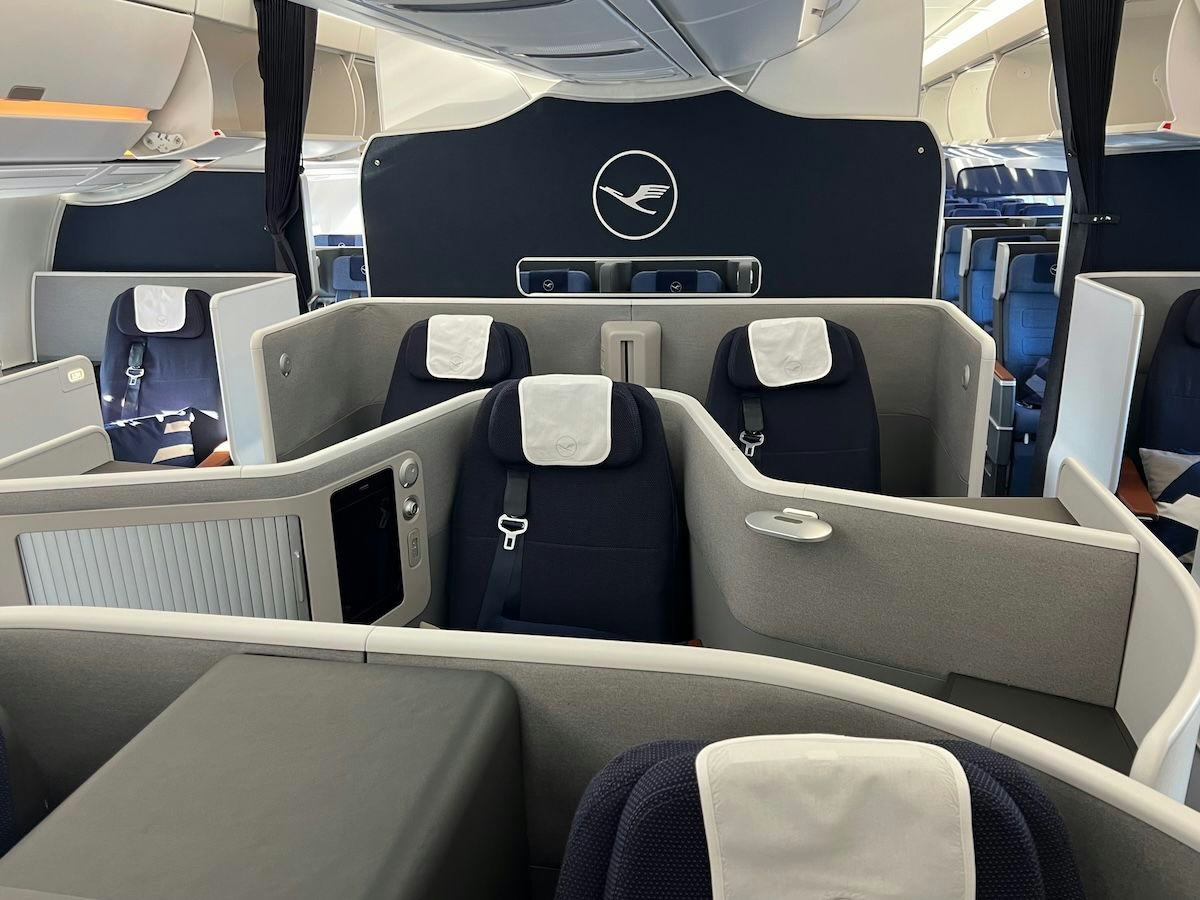
Airline Seat Shortages Delay Jet Deliveries
Airline Seat Shortages Delay Jet Deliveries
As global air travel recovers from the pandemic, the premium cabins of long-haul jets have become some of the most valuable spaces in the aviation industry. Airlines are investing heavily in these areas, with business-class seats commanding prices up to $100,000 and first-class suites reaching as high as $1 million, according to industry insiders. Lufthansa Group Chief Executive Carsten Spohr emphasized the importance of the onboard experience, noting that the crew, seating, and catering remain the few truly differentiating factors for airlines, rather than the aircraft themselves.
Supply Chain Crisis and Its Impact on Deliveries
Despite the growing demand for premium seating, a global shortage of aircraft seats has emerged as a critical bottleneck, contributing to widespread delays in jet deliveries and driving up airfares. A recent study by Tronos Aviation Consultancy and AeroDynamic Advisory projects that airlines will require more than 8 million new seats over the next decade. However, major manufacturers such as Boeing and Airbus have struggled to meet delivery targets amid persistent supply chain disruptions. In the first four months of this year, only 359 planes were delivered worldwide, a figure significantly below the forecasted 1,430.
Airbus has warned that these delays could continue for up to three more years, attributing much of the backlog to shortages of engines and, notably, aircraft seats. John Walton, founder of the specialist publication The Up Front, described the situation as a “perfect storm” of challenges that have stalled the industry. The seat manufacturing sector, characterized by fragmentation and slow recovery from the pandemic, faces additional hurdles including certification bottlenecks and rising demand for customized features. These factors hinder the ability to scale production efficiently.
The Complexity of Aircraft Seat Manufacturing
The intricacy of producing aircraft seats is often underestimated. Dafydd Davies, industrial vice president at Safran Seats GB, highlighted the complexity during a visit to the company’s factory in Cwmbran, South Wales. While the exterior of a seat may appear simple, the mechanical assembly beneath involves thousands of components. A single luxury seat can require up to 3,000 parts sourced from approximately 50 suppliers across 15 countries, illustrating the extensive and delicate nature of the supply chain.
This specialized segment of the aerospace industry has become central to resolving the delivery backlog that has cost Airbus and Boeing billions of dollars and contributed to rising ticket prices. In Canada, for instance, limited competition from discount airlines has exacerbated fare increases, prompting calls for greater foreign participation in the market.
Rising Demand and Industry Innovation
The business aviation sector is also experiencing robust growth, with aircraft deliveries expected to increase by 11% in 2025. This surge intensifies competition among seat manufacturers, who face mounting pressure to innovate and expand production capacity to satisfy both commercial and private aviation markets.
At the annual Aircraft Interiors exhibition in Hamburg, a highly exclusive event, manufacturers unveil advancements in smart seating technology, sustainable materials, and luxury amenities. Yet, despite these innovations, the fundamental challenge remains: delivering a premium passenger experience depends on the successful coordination of a complex global supply chain, meticulously assembling each seat—one component at a time.
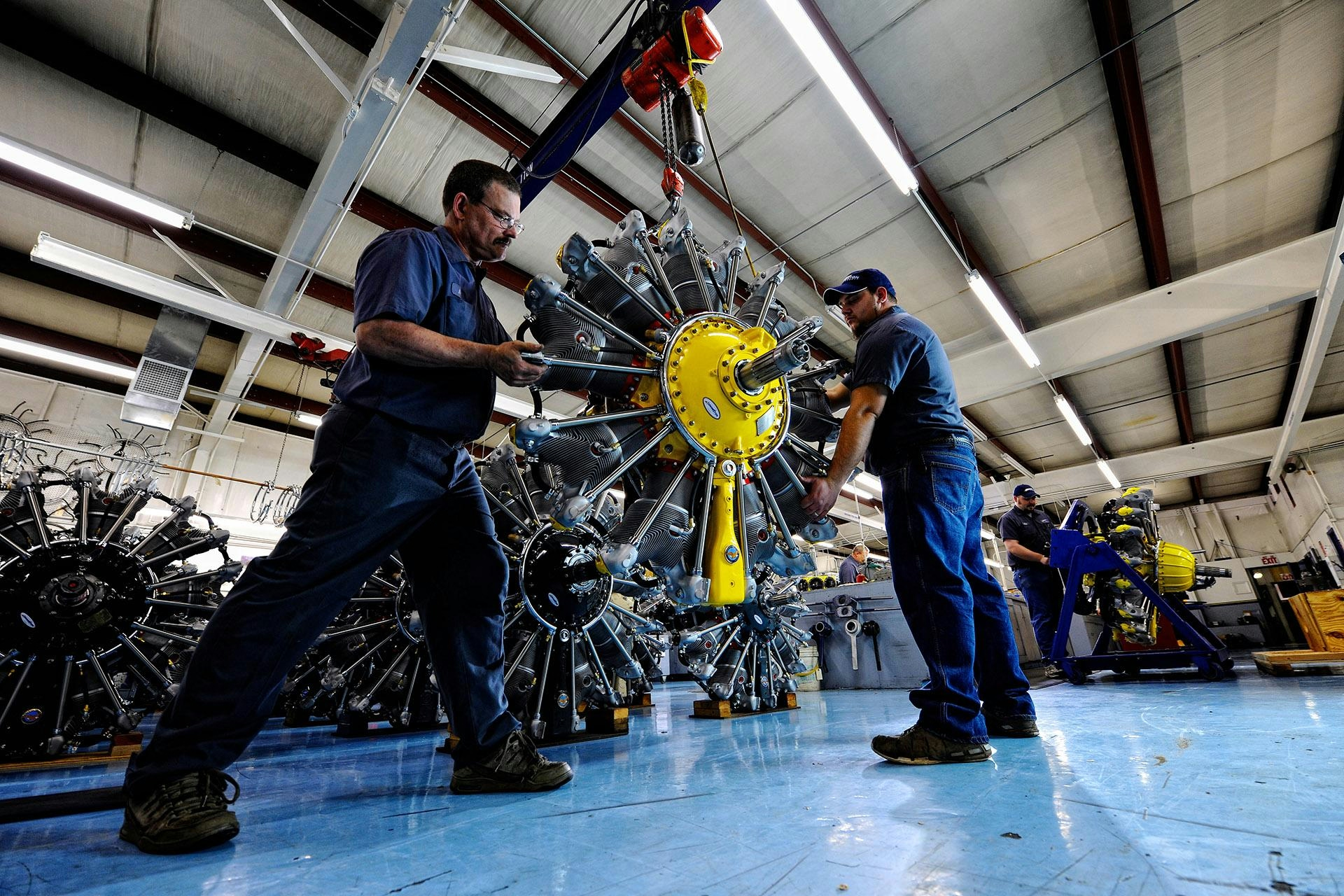
Covington Aircraft Engines to End Radial Engine Production in 2025
Covington Aircraft Engines to Cease Radial Engine Production in 2025
After more than fifty years of dedicated service to the aviation sector, Covington Aircraft Engines has announced it will close its esteemed radial engine facility by the end of 2025. Based in Oklahoma, the company has earned international acclaim for its expert overhauls of Pratt & Whitney Canada’s R-985 and R-1340 radial engines. Since its establishment in 1972, Covington has played a crucial role in maintaining and powering radial engine aircraft, becoming a cornerstone in the preservation of this classic technology.
A Legacy Rooted in Craftsmanship and Service
Founded by Bob Covington and Paul Abbott, the company initially concentrated on supporting radial engines for air cargo operators, particularly those involved in transporting automobile parts. Over the decades, Covington expanded its operations and cultivated a reputation for exceptional craftsmanship, integrity, and customer service. Its clientele grew to encompass not only commercial operators but also the warbird and agricultural aviation communities, solidifying Covington’s status as a trusted authority in radial engine maintenance.
In 2025, Covington is poised to reach a significant milestone by servicing its 10,000th Pratt & Whitney Canada radial engine, highlighting its position as one of the world’s most prolific providers of radial engine overhauls. Aaron Abbott, President of Covington Aircraft Engines, reflected on the decision to wind down operations, stating, “These engines are the very foundation of our business. They built our reputation and allowed us to grow into the company we are today. We are incredibly proud of the legacy we leave behind and honored to have been part of keeping these iconic engines flying for so many years.” The company has committed to continuing overhauls of the R-985 and R-1340 engines through the end of 2025 and will fully honor all existing warranty obligations.
Industry Transition and Future Challenges
Covington’s decision coincides with a period of profound technological transformation within the aviation industry. As the sector increasingly embraces advanced propulsion technologies—including hydrogen power initiatives and electric aircraft engines—the demand for traditional radial engines is diminishing. Collaborations such as those between GKN and ICEFlight, alongside innovations like Pratt & Whitney’s immersion cooling technology, are accelerating the adoption of next-generation propulsion systems. Meanwhile, major competitors including Safran Aircraft Engines and GE Aerospace are investing heavily in new engine leasing models and cutting-edge technologies such as the LEAP engines, diverting attention and resources from legacy engine platforms.
This shifting landscape presents significant challenges for Covington and similar enterprises, as the market grapples with concerns over the future availability and viability of traditional radial engines. Industry players are expected to intensify investments in electric and hydrogen-powered propulsion systems to remain competitive and capitalize on emerging opportunities.
As Covington Aircraft Engines prepares to conclude its radial engine operations, the company marks the end of a 53-year chapter defined by excellence, reliability, and a steadfast commitment to aviation heritage. The closure of its radial engine shop not only signifies the conclusion of an era for Covington but also reflects a broader industry transition toward the future of flight.
For further information, visit www.covingtonaircraft.com.
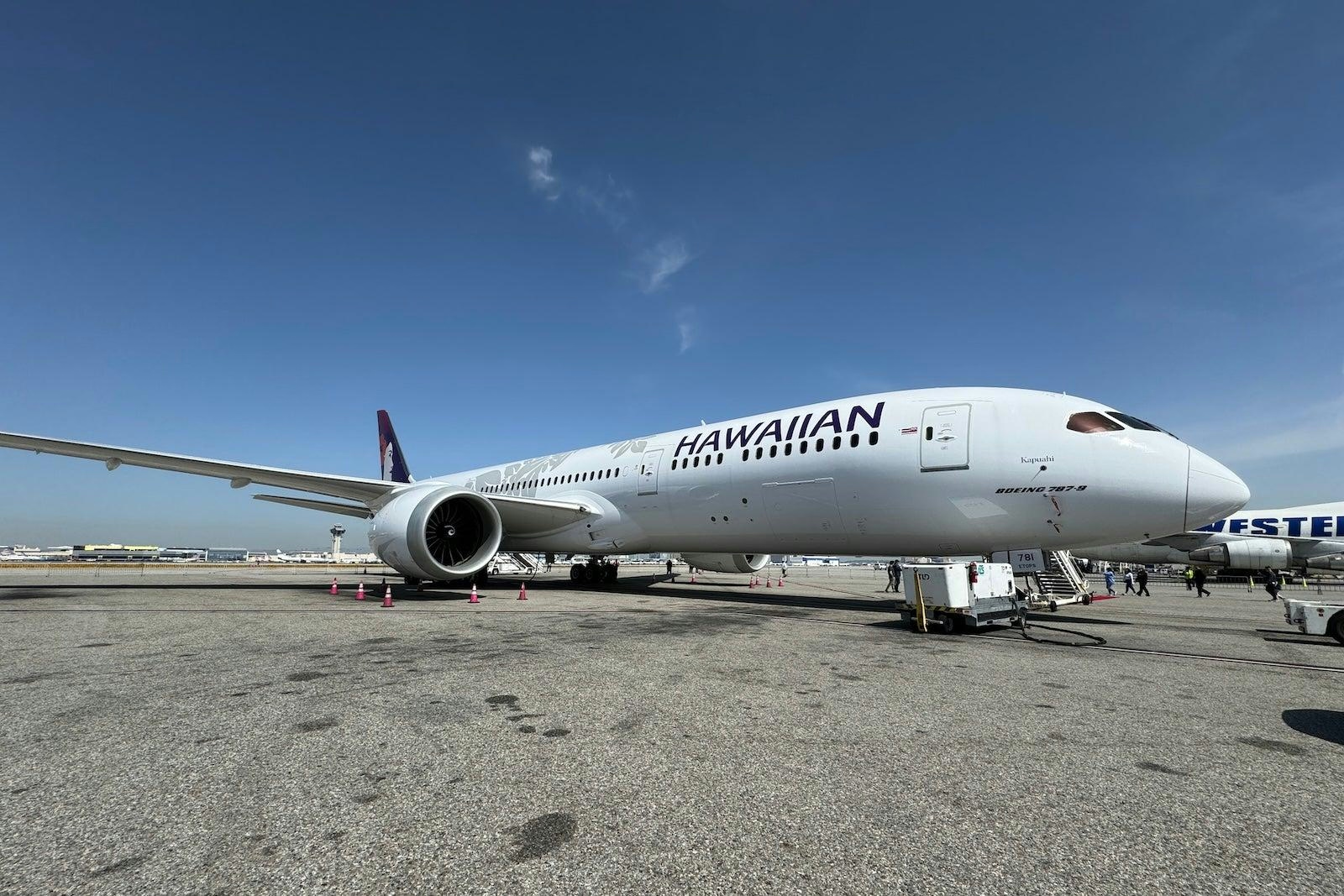
Alaska Airlines Orders Additional Boeing 787s, Plans Dreamliner Base in Seattle
Alaska Airlines Expands Boeing 787 Fleet and Establishes Dreamliner Base in Seattle
Alaska Airlines is intensifying its long-haul expansion from Seattle-Tacoma International Airport (SEA) with an order for five additional Boeing 787-9 Dreamliners. The Seattle-based Oneworld carrier has exercised purchase rights for these aircraft from the Hawaiian Airlines orderbook, as confirmed by Larry Payne, chair of the Hawaiian Airlines Master Executive Council at the Air Line Pilots Association (ALPA), during the Alaska Pilots Podcast. This acquisition increases Alaska’s firm commitments for the 787-9 to 13, supplementing the four already in its fleet as of March 2024. In addition to the Dreamliners, Alaska has also exercised options for 12 more Boeing 737 MAX 10s and plans to open a Hawaiian 787 pilot base in Seattle by March 2026.
Strategic Growth Following Hawaiian Merger
These fleet developments reflect Alaska’s broader strategy following its merger with Hawaiian Airlines, which was finalized in September 2024. Alaska’s management has emphasized that Hawaiian’s 787s will play a pivotal role in connecting Seattle with international destinations. The airline inaugurated its first long-haul flight from Seattle in May, operated by Hawaiian using an Airbus A330, to Tokyo Narita. Service to Seoul’s Incheon International Airport is scheduled to commence on September 12, with flights to Rome Fiumicino—the first European destination jointly served by Alaska and Hawaiian—planned for May 2026. Hawaiian will operate the Seoul route with an A330 and the Rome route with a 787, introducing Alaska’s new flagship international experience.
Navigating a Crowded Market
Alaska’s expansion occurs amid intensifying competition at SEA. The airline aims to operate at least 12 long-haul intercontinental routes from Seattle by the end of the decade, but this ambition faces challenges from market saturation and direct rivalry. Delta Air Lines, Alaska’s largest competitor in Seattle, has responded promptly to Alaska’s transatlantic plans. Shortly after Alaska announced its Rome service, Delta revealed nonstop flights from Seattle to Rome and Barcelona, both launching in May 2026. With an established long-haul base in Seattle and existing flights to Asia and Europe, Delta is well-positioned to counter Alaska’s international growth.
Delta’s expansion represents a strategic effort to maintain its market dominance in Seattle as Alaska broadens its global footprint. While Alaska remains the largest carrier in the Puget Sound region and a favored hometown brand, it now confronts a more crowded and competitive international market.
Looking Ahead
As Alaska Airlines expands its Dreamliner fleet and prepares to establish a 787 base in Seattle, the airline is placing significant emphasis on enhanced global connectivity to drive its next phase of growth. However, with major competitors like Delta increasing their international offerings from Seattle, Alaska’s long-haul ambitions will face considerable tests from evolving market dynamics and heightened competition.
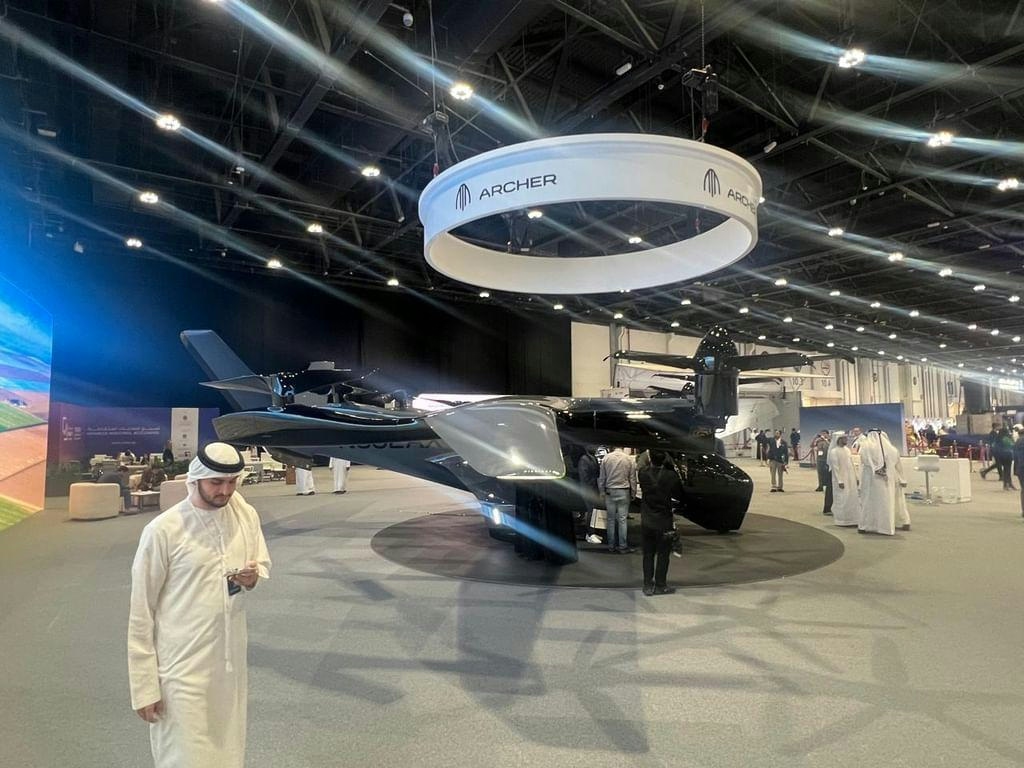
UAE Aviation Authority Unveils Framework to Regulate Electric Air Taxis
UAE Aviation Authority Unveils Framework to Regulate Electric Air Taxis
The United Arab Emirates’ General Civil Aviation Authority (GCAA) has introduced a comprehensive regulatory framework aimed at governing the operation of electric vertical take-off and landing (eVTOL) aircraft alongside conventional helicopters throughout the Emirates. This new set of guidelines, announced following a series of successful test flights, is designed to facilitate the shared use of infrastructure such as landing pads by both electric air taxis and traditional helicopters, promoting seamless integration within the country’s aviation landscape.
Advancing Aviation Innovation Through Regulation
The announcement comes on the heels of two significant test flights conducted in the UAE. On Monday, Joby Aviation, a California-based company collaborating with Dubai’s Roads and Transport Authority, demonstrated an electric air taxi in preparation for its planned commercial launch next year. Shortly thereafter, Archer Aviation, another U.S.-based firm, completed its inaugural air taxi test flight in Abu Dhabi on Wednesday. These milestones underscore the UAE’s commitment to embracing cutting-edge aviation technologies.
Saif Mohammed Al Suwaidi, director general of the GCAA, emphasized the transformative nature of the new framework, stating, “The UAE has always been at the forefront of excellence in aviation. This pioneering regulatory framework does not merely enable new technology; it redefines how aviation evolves.” He highlighted the nation’s dedication to fostering innovation and integrating advanced air mobility solutions into its national infrastructure.
The framework aims to establish a flexible regulatory environment that can adapt to rapid technological advancements while upholding stringent safety standards. Al Suwaidi further noted that the initiative reflects the UAE’s commitment to cultivating a supportive ecosystem for the growth of this emerging sector, envisioning a future where advanced air mobility is seamlessly embedded within the country’s transport network.
Operational and Market Implications
Aqeel Al Zarouni, assistant director general for aviation safety affairs at the GCAA, pointed out that the regulations will enable the dual use of existing helicopter pads for both conventional helicopters and electric aircraft. This approach is expected to streamline operations and reduce the need for additional infrastructure, thereby facilitating smoother integration of eVTOL services.
Despite the promising outlook, the implementation of this framework presents several challenges. Ensuring regulatory compliance, maintaining safety assurance, and addressing technological readiness remain critical concerns as the sector evolves. The GCAA will be tasked with enforcing rigorous standards to sustain public confidence and operational safety across all operators, both new and established.
The UAE’s regulatory initiative has elicited swift responses from the market. Joby Aviation, which is also planning services in the United States and maintains a strategic partnership with Delta Air Lines, is likely to intensify its focus on the region. Competitors such as Archer Aviation and Boeing-backed Wisk may also seek to expand their presence in the UAE, potentially altering the competitive landscape and shifting market dominance away from European firms like Vertical Aerospace. Furthermore, companies like Eve Air Mobility, which has secured preliminary agreements for electric air taxis in the Americas, may look to capitalize on emerging opportunities in the Middle East.
As the UAE positions itself as a global leader in advanced air mobility, the success of this regulatory framework will be closely monitored by industry stakeholders worldwide. Its implementation could serve as a benchmark for other nations contemplating similar regulatory approaches in this rapidly evolving sector.

Qantas Cyberattack Underscores Supply Chain Security Risks
Qantas Cyberattack Highlights Growing Supply Chain Security Vulnerabilities
A significant cyberattack targeting Qantas has reignited concerns over the susceptibility of organisations to data breaches originating from third-party suppliers. The breach, reportedly linked to a compromised subcontractor’s system connected to Qantas’ customer contact centre, underscores the increasing threat posed by third-party cyber risks. These risks now account for the majority of data breaches across Australia, prompting businesses nationwide to reevaluate the robustness of their digital supply chains.
Industry-Wide Impact and Response
The fallout from the Qantas incident has extended beyond the airline sector, influencing both public and private organisations. Victoria Police, for instance, has renewed its IT support contract in direct response to the heightened urgency surrounding cybersecurity resilience. This breach is part of a broader pattern of attacks affecting companies such as UNFI, WestJet, and Hawaiian Airlines, all of which have experienced operational disruptions and intensified cybersecurity challenges. In light of these events, competitors have accelerated efforts to strengthen security protocols and conduct thorough investigations into their own supply chain vulnerabilities. This trend reflects a growing industry-wide recognition of the risks embedded within increasingly complex digital ecosystems.
Ben Le Huray, Solutions Architect Team Leader at Ingram Micro Australia, emphasised that cyber resilience must extend beyond an organisation’s internal defences. He noted that even with robust internal security measures, exposure remains if a supplier is compromised. Le Huray advocates for integrating third-party risk management into core governance frameworks, recommending that organisations meticulously map vendor access, rigorously assess supplier security credentials, and embed supply chain monitoring within their overall cybersecurity strategies. He further stressed the importance of regular security audits, proactive incident response planning, and leveraging current threat intelligence to identify and mitigate risks before they escalate.
Le Huray also highlighted the legal and reputational consequences organisations face when breaches originate from external partners. Recent cyber regulations impose mandatory reporting requirements on ransom payments, with severe penalties for non-compliance. “Even if an external partner is the source of a breach, the consequences are still yours to manage,” he warned.
Louise Hanna, General Manager at Excite Cyber, echoed these concerns, underscoring the necessity for third parties to adhere to the same stringent security standards as their clients. She pointed out that while many organisations are fortifying their own systems, it is equally critical to ensure that essential service providers maintain robust protections to prevent data compromise.
Aviation Sector’s Unique Challenges and Strategic Recommendations
Kash Sharma, Managing Director for ANZ at BlueVoyant, highlighted the aviation industry’s particular vulnerability due to its complex digital supply chains. Describing the Qantas breach as a “stark reminder of the growing cyber risks facing the aviation sector,” Sharma noted that the industry is already grappling with workforce shortages, economic pressures, and geopolitical tensions. He explained that cybercriminals are increasingly exploiting systemic weaknesses within sprawling supply chain networks that often lack comprehensive security governance.
Sharma referenced guidance from the International Civil Aviation Organization, which identifies insecure supply chains and digitised operations as primary risk factors for cyberattacks in aviation. He warned that attackers now employ customisable, AI-powered toolkits capable of executing sophisticated intrusions targeting sensitive passenger data, including names, contact information, and frequent flyer details. To counter these threats, Sharma urged organisations to prioritise supply chain security by clearly defining vendor responsibilities and adopting internationally recognised frameworks such as ISO27001 and NIST 2.0.
While welcoming the Australian government’s AUD $6.4 million investment in sector-wide threat sharing initiatives, Sharma emphasised the necessity for sustained and coordinated efforts to effectively address the evolving cyber threat landscape confronting the aviation industry.
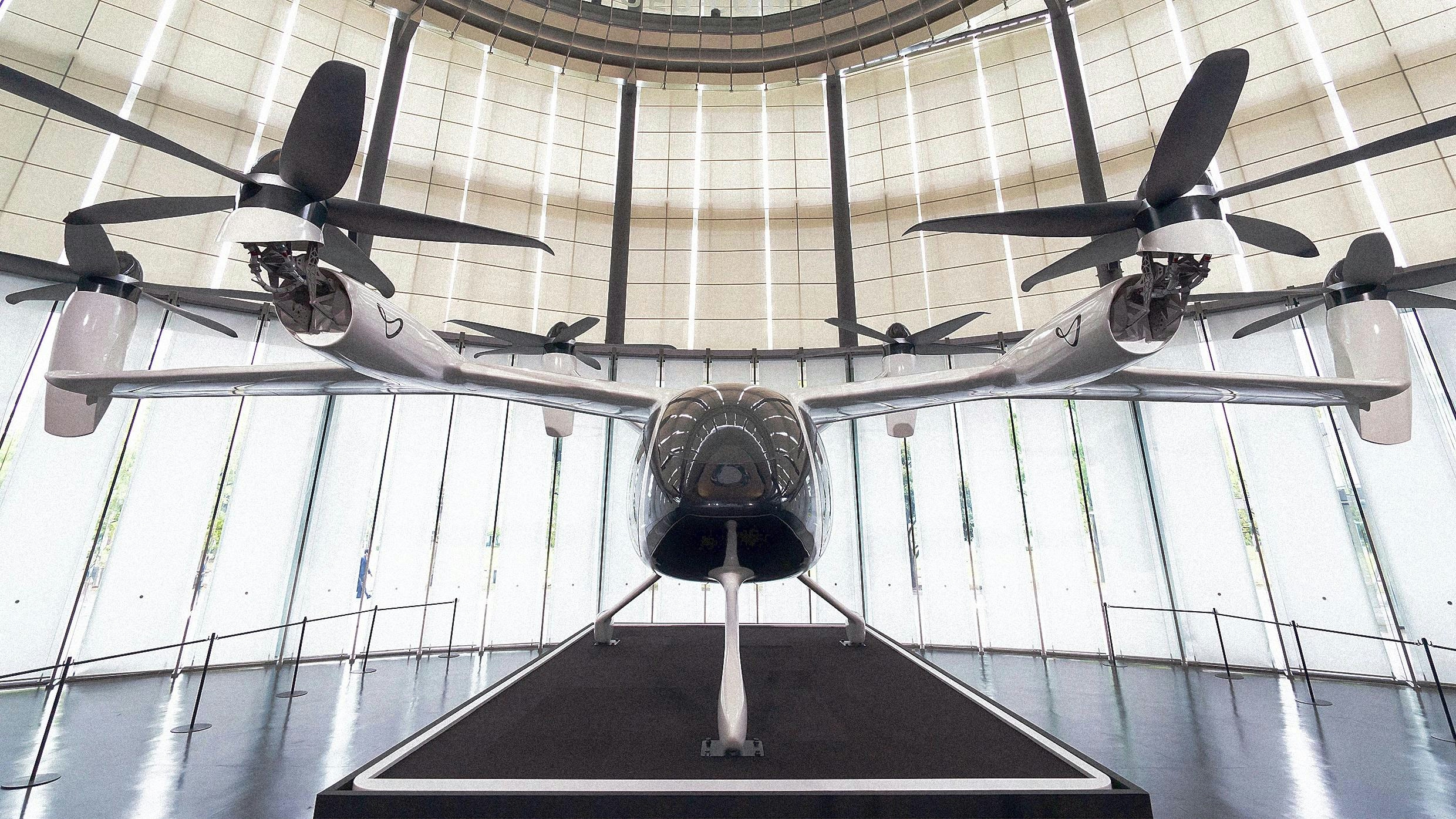
Electric Air Taxi Company Supported by American Airlines Seeks to Transform Travel
Electric Air Taxi Company Supported by American Airlines Seeks to Transform Travel
Pioneering Zero-Emission Urban Air Mobility
Vertical Aerospace, a British company backed by prominent industry players including Honeywell, Rolls-Royce, and American Airlines, is advancing the development of electric vertical take-off and landing (eVTOL) aircraft with the goal of revolutionizing urban travel. Since its inception in 2016, the firm has positioned itself at the forefront of zero-emissions aviation technology. Under the leadership of Stuart Simpson, who assumed the role of CEO in May 2024, Vertical Aerospace aims to introduce its flagship model, the VX4, to commercial markets within the next three years.
The VX4 is designed to cruise at speeds of approximately 150 miles per hour and cover distances exceeding 100 miles on a single battery charge. Simpson envisions the aircraft as a foundational element in establishing “highways in the sky,” fundamentally transforming short-distance travel by offering a sustainable and efficient alternative to traditional ground transportation.
Investment, Industry Momentum, and Market Integration
The concept of electric air taxis, once regarded as a futuristic novelty, is rapidly gaining credibility and investment. Simpson highlighted that the sector has attracted around $2.5 billion in funding, reflecting growing confidence from investors, regulators, and infrastructure developers alike. This influx of capital is accelerating technological advancements and regulatory progress, fostering an environment conducive to commercial deployment.
Strategic partnerships between eVTOL manufacturers and major airlines are central to integrating electric aircraft into existing passenger transport networks. These collaborations primarily focus on providing premium services that connect passengers to and from international flights. Simpson estimates that initial fares will be approximately $2 per seat per kilometer, a price point comparable to premium ride-hailing services such as Uber Black. However, as Vertical Aerospace functions as an original equipment manufacturer, the ultimate pricing will be determined by the airlines that acquire the aircraft.
Regulatory and Market Challenges
Despite the promising outlook, Vertical Aerospace faces considerable regulatory and market challenges. The VX4 must secure certification under stringent safety standards established by the UK Civil Aviation Authority (CAA) and the European Union Aviation Safety Agency (EASA), specifically within the SC-VTOL enhanced category. The company anticipates launching passenger services in the United Kingdom by 2028, with plans to expand into the United States within three to six months following the European debut.
Navigating the regulatory landscape remains a significant hurdle, as aviation authorities adapt existing frameworks to accommodate emerging eVTOL technologies. In addition to certification, the company must address technological development challenges and overcome skepticism from traditional aviation stakeholders regarding the safety and viability of electric air taxis. The competitive environment is intensifying, with rival firms forging strategic alliances and investing heavily in innovation to capture market share.
Competitive Landscape and Strategic Positioning
Vertical Aerospace faces competition from several well-funded companies advancing their own eVTOL projects. Archer Aviation, in partnership with United Airlines, plans to introduce its “Midnight” aircraft in Abu Dhabi this year, with ambitions to launch services in New York City by 2026, pending regulatory approval. Joby Aviation, collaborating with Delta Air Lines and Uber, is preparing to commence operations in Dubai within the year, with U.S. service expected to follow after Federal Aviation Administration (FAA) certification.
While some European competitors have encountered setbacks, the United States remains a critical market for growth and innovation in electric urban air mobility. Simpson expressed confidence in Vertical’s strategy, emphasizing the company’s collaboration with leading aerospace partners to ensure the VX4’s successful market entry. “We’re not building a supply chain of things we don’t understand,” he stated. “We’re working with the world’s leading aerospace companies to bring this aircraft to market.”
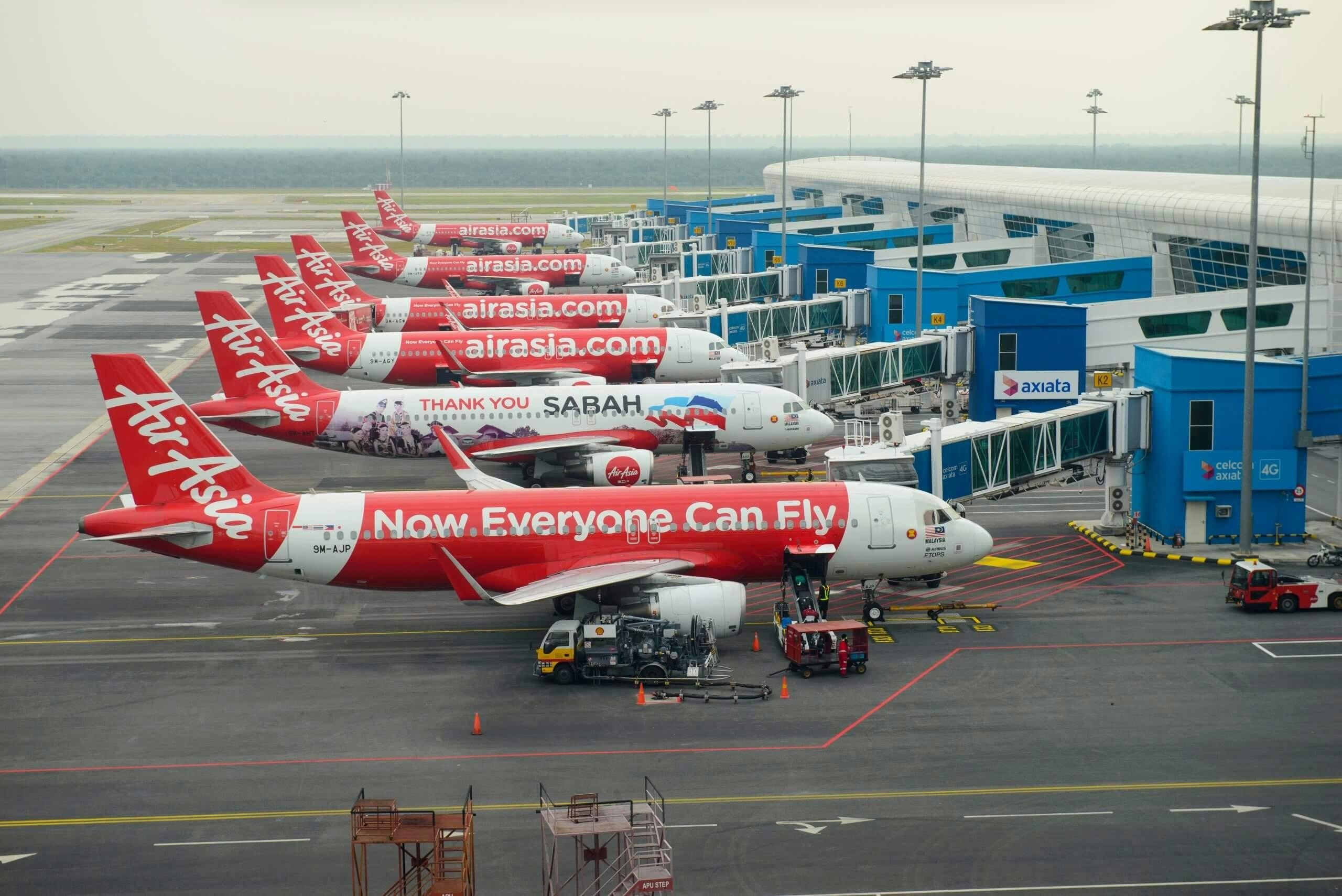
AirAsia Orders 50 Airbus A321XLR Jets as Restructuring Nears Completion
AirAsia Commits to 50 Airbus A321XLR Jets Amid Restructuring Progress
AirAsia has formalized a memorandum of understanding with Airbus to acquire 50 A321XLR long-range aircraft, with options to convert an additional 20 jets from its existing order portfolio. This agreement marks a significant milestone as the Malaysia-based low-cost carrier nears the completion of a comprehensive restructuring process.
The deal, confirmed on Friday, follows reports that Tony Fernandes, CEO of Capital A Group—the parent company of AirAsia—was engaged in advanced negotiations for a substantial order of Airbus’s latest narrow-body model. AirAsia, one of Asia’s largest budget airlines and a major Airbus customer, currently holds orders for approximately 360 aircraft.
Fernandes revealed that the airline intends to place an additional order for 150 aircraft within the coming month, thereby finalizing its fleet strategy for the foreseeable future. While specific models have not been disclosed, ongoing discussions include a significant acquisition of smaller jets, potentially the Airbus A220 or Embraer E2 regional aircraft.
Strategic Expansion and Market Implications
AirAsia’s fleet expansion plans emerge amid a rapidly evolving competitive environment. Recent large-scale aircraft orders by carriers such as ANA Holdings and Riyadh Air are reshaping market dynamics, potentially prompting strategic responses across the industry. Analysts suggest that AirAsia’s new order could trigger competitive reactions, including the introduction of new aircraft models or enhanced service offerings, as rivals strive to protect market share. These developments may also lead to adjustments in pricing and operations as airlines respond to shifting demand and increased capacity.
Capital A was designated as financially distressed by Malaysia’s stock exchange in 2022 due to the impact of pandemic-related travel restrictions. The company is now preparing to exit its PN17 status, a process expected to conclude soon following the planned sale of AirAsia’s aviation business to its long-haul affiliate, AirAsia X. This consolidation aims to unify both long- and short-haul operations under the AirAsia brand. Upon completion, the expanded AirAsia will remain publicly listed in Malaysia and plans to issue its first bond in October, with two credit rating agencies currently evaluating the company.
Operating a fleet of 255 aircraft, AirAsia has been actively restructuring its order book after enduring severe financial challenges during the COVID-19 pandemic. The airline primarily operates economy-only, narrow-body aircraft typical of low-cost carriers. Fernandes also noted ongoing negotiations with Airbus concerning a historic order for 15 A330 wide-body jets, although no cancellations have been made.
Looking forward, AirAsia aims to extend its network to North America and Europe while maintaining its budget fare model. The long-range capabilities of the A321XLR are central to this strategy, despite the inherent range limitations of single-aisle aircraft. To overcome these constraints, AirAsia is exploring the establishment of hub airports in the Middle East, Europe, and the Asia-Pacific region. Discussions are underway with four Gulf cities, including locations in Saudi Arabia and the Emirate of Ras Al Khaimah, with Bahrain also under consideration.
As AirAsia finalizes its restructuring and fleet expansion, its strategic moves are poised to influence regional competition and market dynamics, highlighting the intensifying race among carriers to capture the resurgence in post-pandemic travel demand.
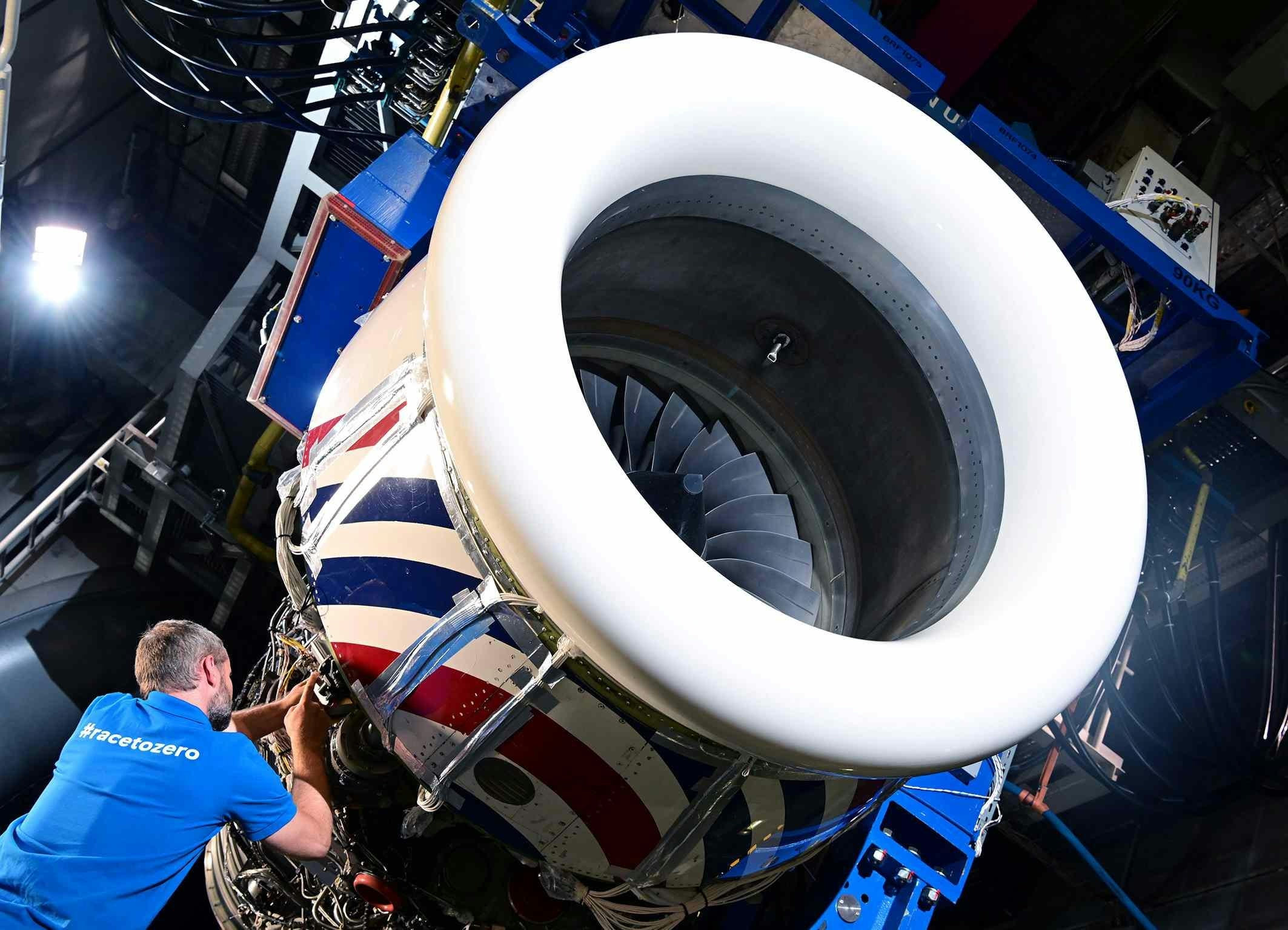
Rolls-Royce Plans Return to Short-Haul Aircraft Engine Market
Rolls-Royce Plans Strategic Return to Short-Haul Aircraft Engine Market
Rolls-Royce is preparing to re-enter the narrowbody aircraft engine sector, targeting a share of the $1.6 trillion global short-haul engine market. This strategic move, backed by the UK government, could involve reviving a joint venture with US manufacturer Pratt & Whitney, according to chief executive Tufan Erginbilgic. Currently, Rolls-Royce’s focus lies primarily on powering long-haul widebody aircraft, but the company now views the short-haul segment as a significant growth opportunity. Erginbilgic described the initiative as “the single-biggest opportunity for economic growth for the UK in the next 50 years.”
Central to this strategy is the development of the next-generation UltraFan engine, a £3 billion programme that has been underway for several years. Rolls-Royce is engaged in ongoing discussions with industrial partners, with the possibility of rekindling its previous alliance with Pratt & Whitney, which ended over a decade ago. Erginbilgic emphasized the company’s engineering capabilities but acknowledged that a partnership might ultimately be the most advantageous outcome.
The UK government has expressed strong support for Rolls-Royce’s ambitions, highlighting the strategic importance of gas turbine technology to national and economic security. Securing a UK engine position on next-generation single-aisle aircraft programmes has been identified as a key industrial priority. Talks are in progress regarding potential taxpayer funding for the UltraFan project. Erginbilgic noted that state support is not unprecedented, pointing out that competitors receive significantly more government assistance. He described the UltraFan development as a “new development” and a “big opportunity” where modest support would be beneficial.
Challenges and Competitive Landscape
Despite the promising outlook, Rolls-Royce faces considerable challenges in re-establishing itself in the short-haul market. The sector is currently dominated by established players such as General Electric, CFM International, and Pratt & Whitney, all of whom are expected to respond with accelerated engine development and aggressive marketing to protect their market share. Additionally, Rolls-Royce must secure substantial investment for new engine development and navigate complex regulatory approvals. Airlines may also exhibit skepticism regarding the performance and cost-effectiveness of any new engine offerings.
Competition is further intensified by Airbus’s development of the next generation of its A320 aircraft, which has shown a preference for CFM’s open-fan technology. Nevertheless, Erginbilgic remains optimistic about Rolls-Royce’s prospects, stating that the final decisions are still “undecided” and that he maintains dialogue with all stakeholders. He underscored the company’s technological expertise, industry credibility, financial strength, and engineering capabilities as key assets that position Rolls-Royce to compete effectively in the narrowbody segment, despite the operational scale-up required.
In addition to its short-haul ambitions, Rolls-Royce has recently invested in enhancing engine durability and secured international contracts for 142 aircraft engines. The company is also expanding its defence and energy operations, including ventures into small modular nuclear reactors for military applications and autonomous vehicle technologies. These efforts reinforce Rolls-Royce’s role as a cornerstone of the UK’s industrial future.
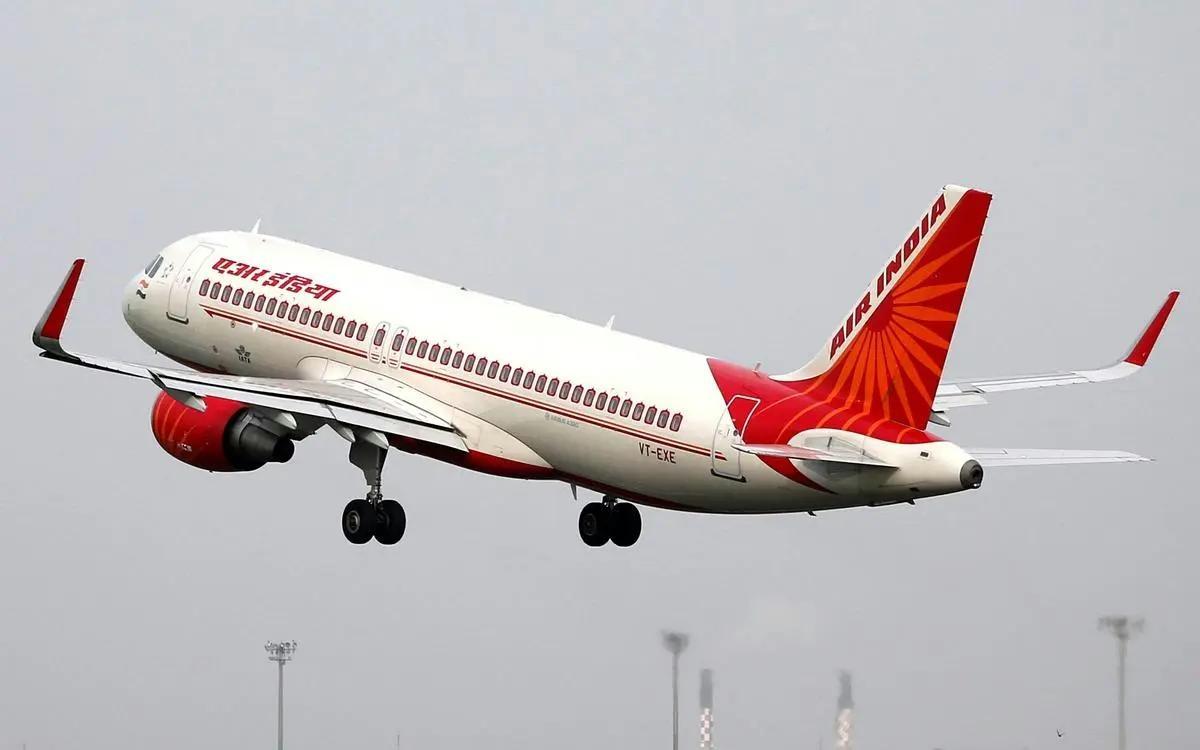
Air India Pilot Collapses in Cockpit Before Bengaluru-Delhi Flight
Air India Pilot Collapses in Cockpit Before Bengaluru-Delhi Flight
An Air India pilot experienced a medical emergency in the cockpit just prior to operating flight AI2414 from Bengaluru to Delhi early on Friday morning. The pilot collapsed while preparing to sign mandatory documents, prompting immediate medical intervention. Airline officials confirmed the incident, noting that the pilot was unable to proceed with the flight and was promptly taken to a local hospital. The pilot is reported to be stable and remains under medical supervision.
The medical emergency caused a delay to flight AI2414, which was subsequently operated by a different pilot. Air India emphasized that its foremost priority is to support the pilot and his family to ensure a swift recovery.
Context and Industry Implications
This incident occurs amid heightened scrutiny of Air India and the broader Indian aviation sector, following the recent crash of Air India Flight 171. The proximity of these events has intensified concerns regarding the airline’s safety protocols and operational procedures. These challenges come at a critical juncture for Air India’s ongoing transformation efforts and India’s aspirations to become a major global aviation hub.
Industry analysts highlight that the airline’s transparency and responsiveness in managing these incidents will be pivotal in shaping public confidence and sustaining operational momentum. The recent developments are also anticipated to influence the aviation insurance market, potentially leading to more stringent and costly coverage conditions for Indian carriers. Investor sentiment towards Air India and the wider sector may be affected, with increased focus on regulatory oversight and safety enhancements.
Competitors and stakeholders within the aviation industry are closely observing Air India’s response, as these events are likely to trigger broader discussions on safety standards and regulatory measures across India’s aviation landscape.
As investigations proceed and the pilot continues to recover, Air India has reaffirmed its commitment to supporting its personnel and maintaining the highest standards of safety.
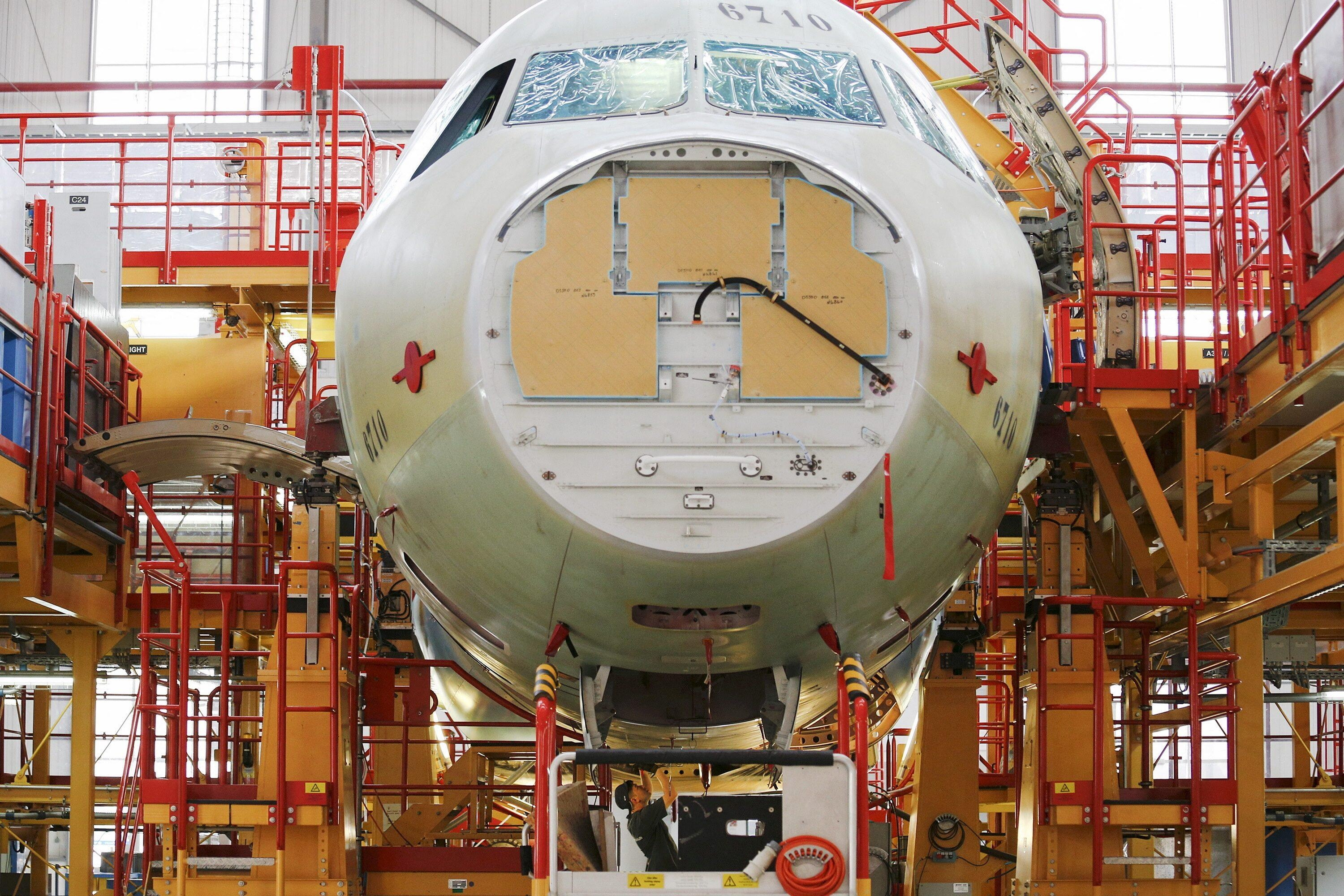
Airbus Faces Challenges as A320neo Production Slows
Airbus Faces Challenges as A320neo Production Slows
Production Delays and Engine Supply Issues
Airbus is currently confronting significant production delays for its A320neo-family aircraft, with nearly 40 jets held at its facilities awaiting engine installation. Despite these setbacks, Christian Scherer, Airbus’s commercial aircraft chief, asserts that the underlying performance of single-aisle production is showing signs of improvement. In the first five months of 2024, Airbus delivered 189 A320neo-family aircraft, a decline from 208 deliveries during the same period last year. Speaking at a briefing in Toulouse on June 11, Scherer emphasized that if not for the engineless aircraft backlog, delivery performance would be slightly ahead of plan, indicating a healthier production ecosystem.
The delays primarily stem from supply chain disruptions affecting the availability of CFM International Leap-1A engines, one of the two engine options for the A320neo family, alongside Pratt & Whitney’s PW1100G. Scherer described the inventory of completed but engineless aircraft as “good cholesterol,” underscoring that once the engines arrive, these jets will be promptly delivered. He highlighted Airbus’s mature relationship with CFM but cautioned that there is no definitive timeline for a significant increase in engine deliveries, only a gradual ramp-up that the company is monitoring closely. Financially, Airbus’s performance remains largely satisfactory despite the inventory buildup.
Production Targets and Industry Context
Airbus aims to achieve a monthly production rate of 75 A320neo aircraft by 2027. While the company has been reserved about revealing detailed progress, Scherer indicated that current production is “just cruising past” 60 aircraft per month. He acknowledged fluctuations caused by supply chain waves but affirmed that the trend is moving in the right direction.
This production slowdown occurs amid broader challenges facing the airline industry, including rising operational costs and ongoing supply chain constraints. A recent report by Skift on the sector’s outlook for 2025 highlights these pressures, noting that airlines are adapting to the evolving environment. For instance, IndiGo has reported a reduction in groundings of Pratt & Whitney GTF-powered aircraft, suggesting shifts in market dynamics that may influence future demand and supply.
Continued Demand and Supply Chain Improvements
Despite production bottlenecks, demand for the A320neo remains strong. Royal Jordanian recently took delivery of its first A320neo from lessor Avolon, while Gulf Air is expanding its narrowbody fleet through a new lease agreement with BOC Aviation. These transactions reflect sustained interest in Airbus’s products even as the company navigates supply challenges.
Elsewhere in Airbus’s operations, supply chain disruptions have eased considerably, though some issues persist. Scherer noted that the “overall disturbance” across Airbus programs, which once involved thousands of missing parts, has largely abated. However, widebody production continues to face constraints, particularly due to shortages of cabin components such as lavatory modules for the A350, produced by Safran in Mexico. Scherer remarked, “You can’t really build an airplane without toilets,” identifying this as the current bottleneck in widebody manufacturing.
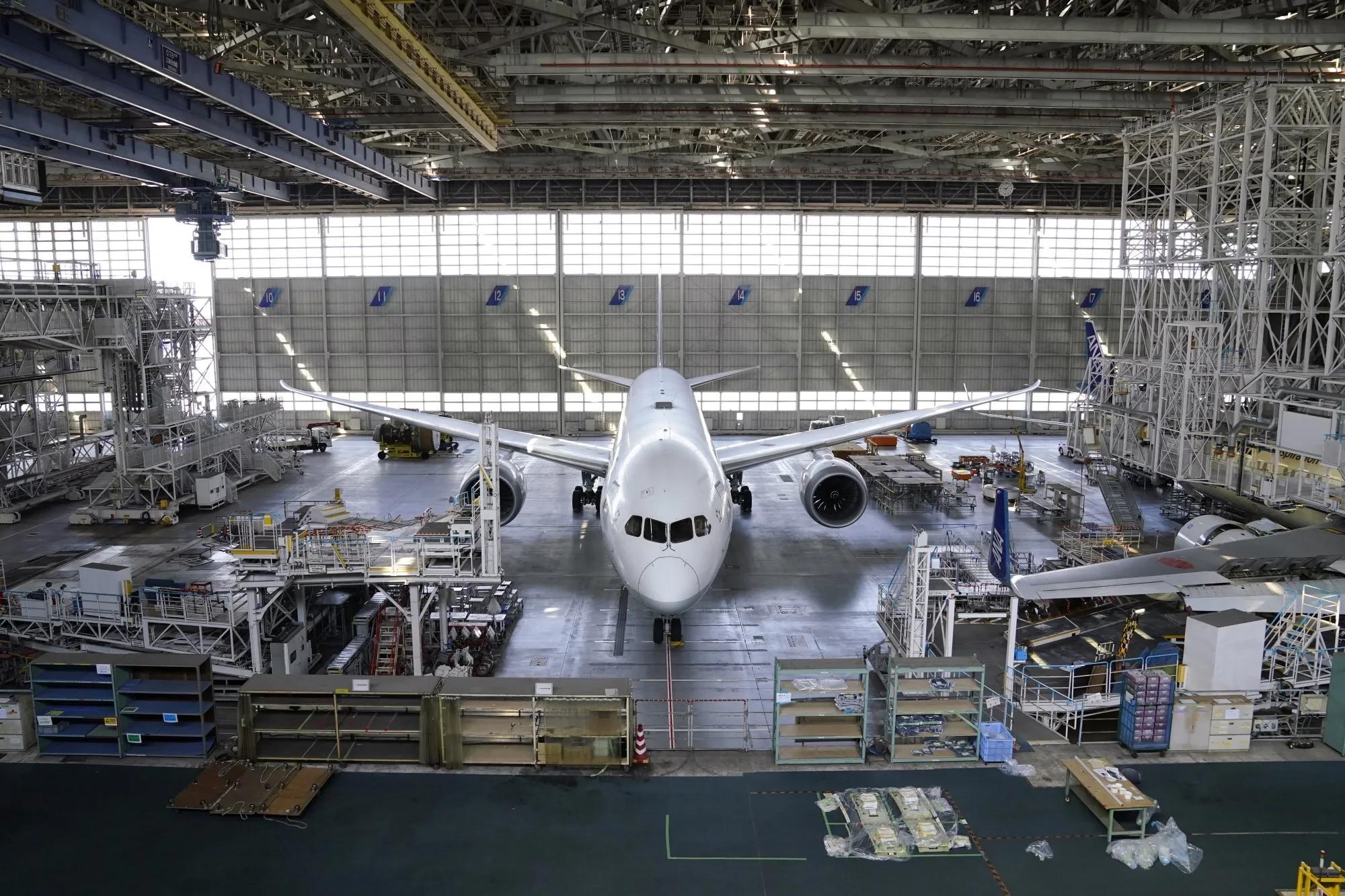
FAA Mandates Inspections of Boeing 787 Over Water Leak Concerns
FAA Mandates Inspections of Boeing 787 Over Water Leak Concerns
The Federal Aviation Administration (FAA) has issued a directive requiring comprehensive inspections of Boeing 787 Dreamliner aircraft following reports of water leaks that could potentially compromise the safety and integrity of the planes. This move comes after several operators reported incidents where water intrusion was detected in critical areas of the aircraft, raising concerns about corrosion and electrical system malfunctions.
Details of the Inspection Directive
The FAA’s Airworthiness Directive mandates that all operators of the Boeing 787 conduct thorough examinations of the aircraft’s fuselage and associated systems to identify any signs of water ingress. The inspections are to focus on areas around the aircraft’s windows, doors, and other structural joints where seals may have deteriorated or failed. The agency emphasized the importance of timely compliance to prevent any escalation of damage that could affect flight safety.
Boeing has acknowledged the issue and is collaborating closely with the FAA and airlines to address the problem. The manufacturer has indicated that it will provide updated maintenance guidelines and support to ensure that the inspections are carried out effectively. Airlines operating the 787 have been advised to prioritize these inspections during routine maintenance schedules.
Implications for Airlines and Passengers
While no incidents directly linked to the water leaks have resulted in accidents or injuries, the FAA’s directive underscores the critical nature of the issue. Airlines may experience temporary disruptions as aircraft undergo the required inspections and any necessary repairs. Passengers are advised to stay informed through their carriers regarding any potential changes to flight schedules.
The FAA continues to monitor the situation closely and has pledged to take further action if additional risks are identified. This directive reflects the agency’s commitment to maintaining the highest standards of aviation safety and ensuring that emerging issues are addressed promptly.
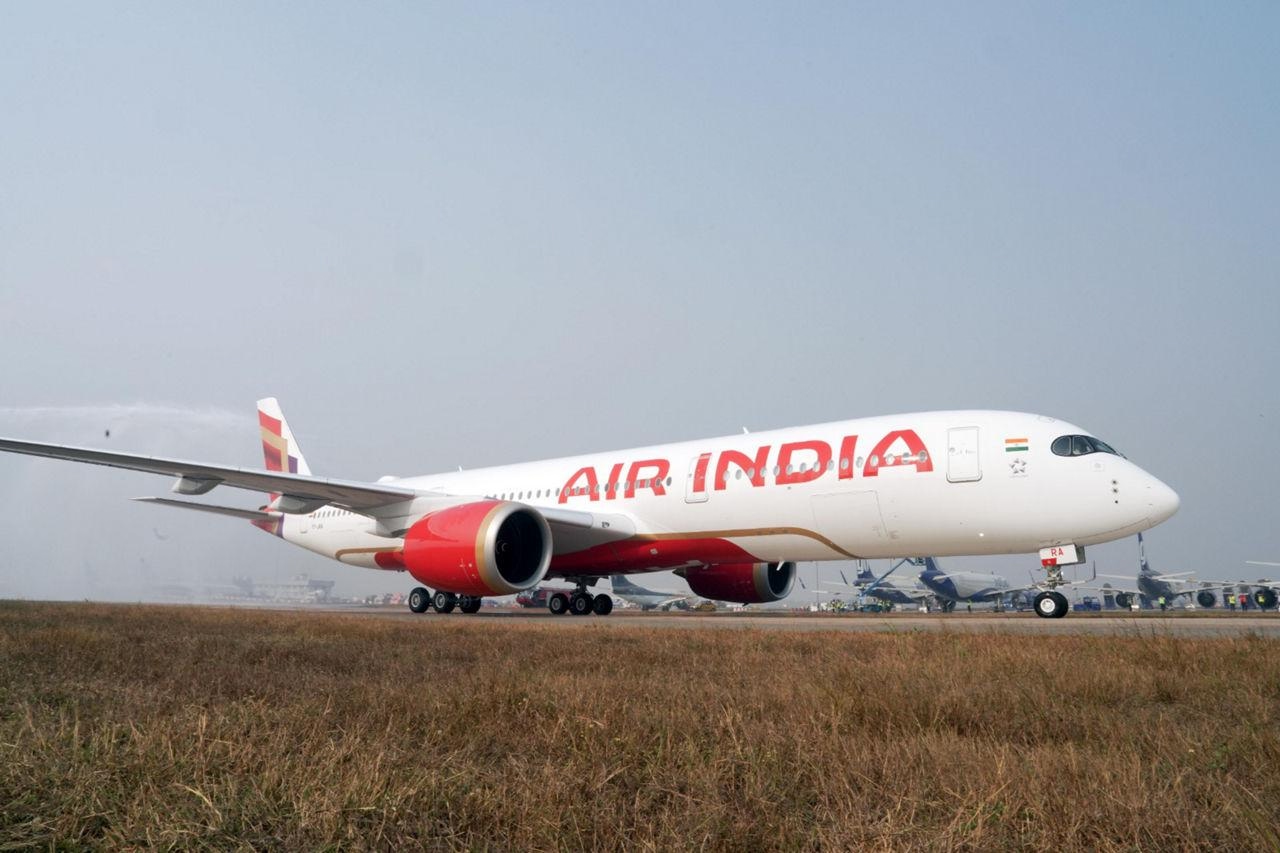
Air India Announces Delivery Schedule for A321neo, A350-1000, and 787-9 Aircraft
Air India Announces Delivery Schedule for A321neo, A350-1000, and 787-9 Aircraft
Major Fleet Modernization Underway
Air India Group, now under the ownership of the Tata Group, is advancing a landmark fleet renewal initiative that promises to transform its operational capabilities and competitive positioning within the Indian aviation sector. Central to this effort is an unprecedented order of 570 aircraft, among the largest in the history of commercial aviation. This extensive acquisition includes the latest models from Airbus and Boeing, notably the A321neo, A350-1000, 787-9 Dreamliner, and 777-9. These additions are expected to significantly expand Air India’s capacity and modernize its fleet.
Delivery Timeline and Deployment Plans
To date, the Air India Group—which comprises both Air India (AI) and Air India Express (IX)—has taken delivery of six Airbus A350-900s alongside more than 40 Boeing 737 MAX aircraft. The next phase of this fleet expansion is scheduled to commence in mid-2025, with the introduction of the first A321neo, A350-1000, and 787-9 Dreamliner aircraft. This phase represents a critical step in the airline’s strategy to increase capacity and enhance service offerings.
Air India Express will be the initial operator of the new A321neo, launching scheduled services from April 15, 2025. The inaugural routes will connect Delhi (DEL) with Bengaluru (BLR) and Srinagar (SXR), with subsequent expansions on April 20 to include Ayodhya (AYJ) and Jaipur (JAI). The A321neo will be configured with 180 economy seats and 12 business class seats, providing improved passenger options on key domestic routes. Currently, Air India operates two A321neos (registrations VT-RTC and VT-RTD) in a 192-seat dual-class layout.
Supply Chain Challenges and Operational Adjustments
Despite the progress, Air India continues to grapple with significant supply chain disruptions. CEO Campbell Wilson has acknowledged ongoing difficulties in procuring essential components such as engines, fuselages, and premium cabin seats. These challenges are expected to cause delivery delays from both Airbus and Boeing, potentially affecting the airline’s growth trajectory for the next four to five years. In response, Air India is extending the operational lifespan of older aircraft, which entails increased maintenance costs, and is facing obstacles in leasing additional planes due to global shortages. The airline is also exercising prudence regarding further Boeing orders amid manufacturing and regulatory constraints.
Widebody Fleet Expansion: A350-1000 and 787-9
The first A350-1000 destined for Air India is nearing completion at Airbus’s Toulouse facility and is anticipated to be delivered in 2026. Currently registered as F-WZFI, the aircraft will soon be re-registered under the VT-series for Indian operations. Concurrently, the initial Boeing 787-9 Dreamliners from the 2023 order are expected to arrive by the end of 2025. Three 787-9s are presently in production at Boeing’s Charleston, South Carolina plant, equipped with General Electric GEnx-1B engines.
Order Composition and Market Implications
Air India’s comprehensive 570-aircraft order includes 20 A350-900s, 20 A350-1000s, 140 A320neos, and 70 A321neos from Airbus, alongside 20 787-9 Dreamliners, 10 777X, and 190 737-8 MAX aircraft from Boeing. Additionally, a 2024 order comprises 10 more A350s and 90 A320 Family aircraft. This sweeping modernization is anticipated to provoke strategic responses from rival carriers, who may reassess their fleet plans in light of Air India’s expanded capacity. Industry analysts expect this development to intensify competition and elevate passenger service standards across the Indian aviation market.
Commitment to Sustainability and Efficiency
Air India’s investment in next-generation aircraft reflects a strong commitment to operational efficiency, passenger comfort, and environmental stewardship. The new A350 and 787-9 models offer substantial fuel savings and reduced emissions, aligning with global efforts to promote sustainable aviation. As these aircraft enter service from mid-2025 onward, Air India is positioned to lead the industry’s transition toward eco-friendly, high-capacity air travel.

Rethinking Assurance Models in Aerospace
Rethinking Assurance Models in Aerospace
Aerospace platforms are experiencing a profound transformation, increasingly characterized by software integration, automation, and enhanced connectivity. At this year’s Paris Air Show, the focus notably shifted away from traditional airframes and propulsion systems toward the digital technologies that are reshaping modern aircraft. Discussions centered on AI-driven design tools, live demonstrations of digital thread implementations, and simulation-based validation environments, underscoring a broader industry movement toward digitalization.
This shift introduces significant complexities throughout the development lifecycle. Jeff Hoyle, Executive Vice President of Aero, Space and Defence at Expleo, highlights a critical challenge facing the sector: ensuring safety and reliability within systems that are adaptive, data-driven, and often opaque. Conventional assurance models, which were designed for linear and deterministic processes, are increasingly inadequate. The aerospace industry is therefore advocating for a new assurance paradigm—one that incorporates artificial intelligence, facilitates real-time traceability, and supports continuous compliance with rigorous regulatory frameworks.
From Static Testing to Predictive Assurance
Traditionally, aerospace validation has relied on static testing schedules and predefined fault models. However, as aircraft systems grow more automated and data-intensive, assurance practices are evolving toward real-time anomaly detection and predictive risk management. Artificial intelligence and machine learning are central to this transition. Advanced algorithms can detect subtle deviations in system behavior, identifying weak signals that might otherwise be lost within vast operational datasets.
Research conducted by NASA illustrates the advantages of combining statistical methods with AI to identify early warning signs in aviation data. This approach enables engineers to intervene earlier in the validation process, thereby reducing the likelihood of failures during later stages. Deep learning techniques, such as autoencoders, are employed to analyze multivariate sensor data from aero-engines, detecting outlier behaviors without requiring exhaustive definitions of every potential failure mode. Studies indicate that unsupervised learning methods can maintain high accuracy even when confronted with noisy or incomplete data, offering promising applications for flight testing and certification planning.
The implications of these technologies extend beyond mere efficiency improvements. By allowing engineers to detect faults within virtual environments, AI compresses development timelines while maintaining, or even enhancing, safety standards.
Navigating New Risks and Market Pressures
As aerospace systems become increasingly integrated and software-dependent, maintaining lifecycle traceability and data visibility is paramount. Companies must continuously monitor component performance and track software modifications throughout the product lifecycle to ensure ongoing compliance and safety.
This imperative for new assurance models arises amid broader industry challenges. The Aerospace Industries Association, representing major corporations such as Boeing, Airbus, RTX, and GE Aerospace, has cautioned that potential new US tariffs could disrupt air safety and supply chains. The association has called for a 180-day suspension of additional tariffs to avoid operational disturbances. In response, companies may be compelled to diversify supply chains or invest in domestic production capabilities, strategies that could elevate costs and intensify regulatory scrutiny on compliance and safety protocols.
The convergence of digital transformation and evolving global trade dynamics is fundamentally reshaping how aerospace companies approach assurance. Integrating AI-driven validation with comprehensive lifecycle traceability is essential not only to meet advancing safety standards but also to navigate the uncertainties of a shifting market landscape. As the industry adapts, the capacity to guarantee safety and reliability in increasingly complex systems will remain central to aerospace innovation.

New Liquid Hydrogen Storage System Advances Zero-Emission Aviation
New Liquid Hydrogen Storage System Advances Zero-Emission Aviation
Breakthrough in Hydrogen Storage and Delivery
Researchers at the FAMU-FSU College of Engineering have developed a pioneering liquid hydrogen storage and delivery system that represents a major advancement toward zero-emission aviation. Published in the journal *Applied Energy*, this innovative design overcomes longstanding engineering challenges by enabling hydrogen to serve not only as a clean fuel but also as an integrated cooling medium for critical power systems in next-generation electric aircraft.
The system is specifically designed for 100-passenger hybrid-electric aircraft, combining hydrogen fuel cells with hydrogen turbine-driven superconducting generators. This integrated approach demonstrates how liquid hydrogen can be efficiently stored, safely transferred, and strategically utilized to cool onboard systems throughout all phases of flight, thereby enhancing overall aircraft performance and safety.
Engineering Challenges and Innovative Solutions
Hydrogen is increasingly recognized as a leading clean fuel alternative for aviation due to its high energy density per kilogram and zero carbon dioxide emissions. However, its ultra-low density necessitates storage as a super-cooled liquid at –253 °C, presenting significant technical and economic challenges. The development of such systems requires advanced engineering solutions alongside substantial infrastructure investments, factors that will influence the pace of hydrogen adoption in the aviation industry.
The FAMU-FSU team addressed these challenges through comprehensive system-level optimization. They introduced a novel gravimetric index, which measures the ratio of fuel mass to total fuel system mass, encompassing all components such as the hydrogen fuel, tank structure, insulation, heat exchangers, circulation devices, and working fluids. This holistic metric moves beyond traditional tank design, aiming to maximize both efficiency and safety.
A critical technical hurdle was designing a system capable of simultaneously delivering hydrogen fuel and managing thermal loads for onboard power electronics within the strict mass and space constraints of an aircraft. Professor Wei Guo, the project’s lead, explained that maintaining liquid hydrogen at cryogenic temperatures without relying on mechanical pumps—heavy and prone to failure at such low temperatures—was particularly challenging. The team’s solution employs precise tank pressure control to regulate hydrogen flow, ensuring responsiveness and reliability while delivering up to 0.25 kg/s of hydrogen during peak demand.
Implications for the Future of Sustainable Aviation
While the prospect of zero-emission flight is generating cautious optimism among aviation stakeholders, significant barriers remain. High costs, technical complexities, and the need for extensive new infrastructure could slow widespread adoption. Nonetheless, momentum is building within the industry, evidenced by recent initiatives such as AMSL Aero’s hydrogen aviation testing and increased research and development efforts from both established companies and emerging players exploring hydrogen fuel cell technologies.
As the aviation sector intensifies efforts to reduce greenhouse gas emissions, innovations like the FAMU-FSU liquid hydrogen storage system may prove instrumental in shaping the future of sustainable flight.
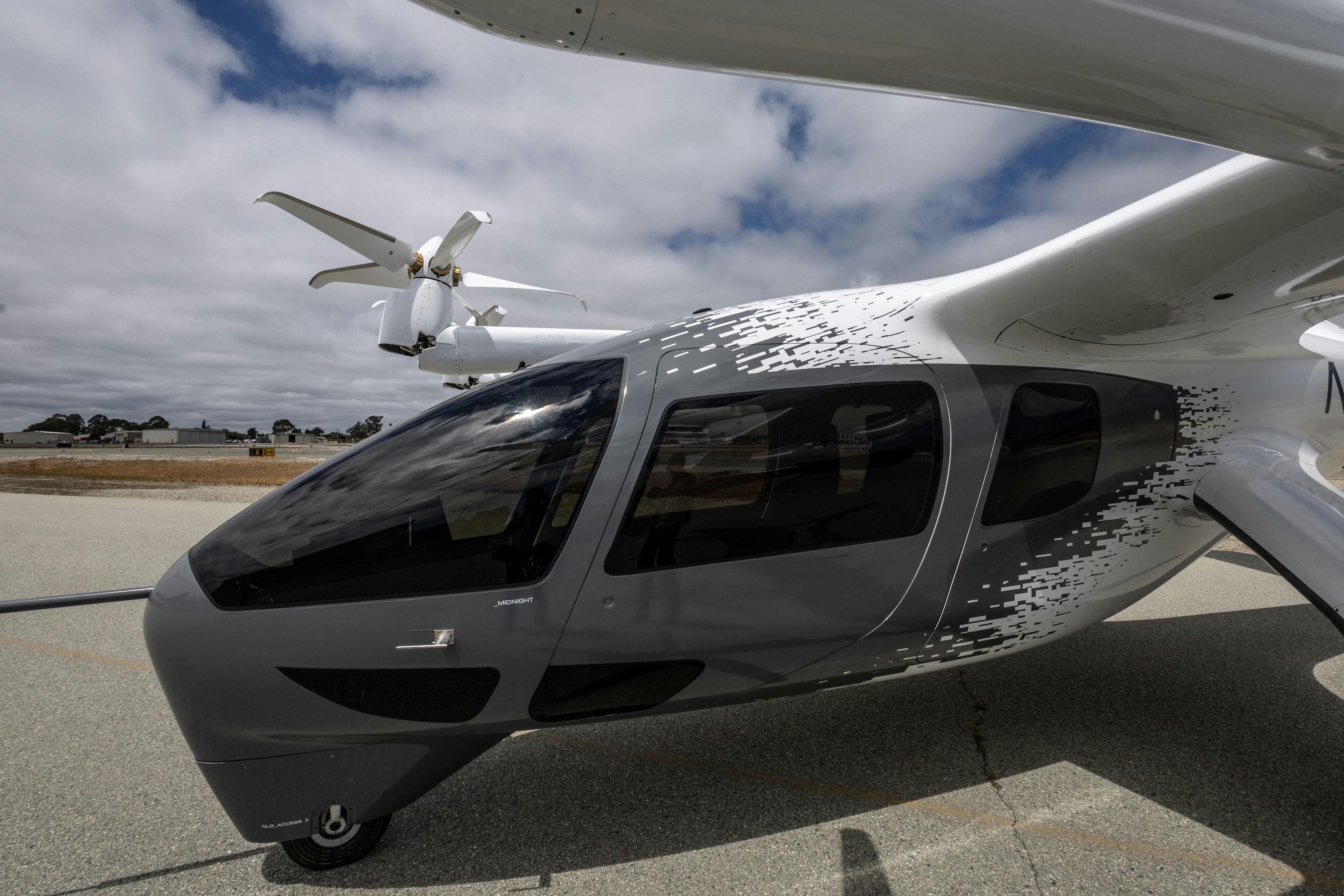
Trump’s EVTOL Speedup Order Impacts Archer Aviation and AIR
Trump’s EVTOL Speedup Order Accelerates Development for Archer Aviation and AIR
As Los Angeles prepares to host the 2028 Summer Olympics, Archer Aviation’s electric air taxis are poised to become a prominent feature of the city’s skyline, offering a novel transportation solution for athletes, VIPs, and guests seeking to avoid the region’s notorious traffic congestion. Designated as the exclusive air taxi provider for the 2028 Olympics, Paralympics, and Team USA, Archer is leading the charge in the burgeoning electric vertical takeoff and landing (eVTOL) industry—a sector now gaining significant momentum following a recent executive order issued by former President Donald Trump.
Executive Order Spurs Industry Growth
Signed on June 6, the executive order mandates the accelerated commercialization of eVTOL aircraft and drones, emphasizing their potential to revolutionize cargo delivery, passenger transport, and other advanced air mobility applications. The directive builds upon regulatory foundations established during the Biden administration, notably the Federal Aviation Administration’s (FAA) creation of the “powered lift” category, which formally recognizes eVTOL vehicles.
Adam Goldstein, founder and CEO of Archer Aviation, expressed strong support for the order, stating, “When the executive order came out, it was saying, yep, this is a big focus. We need to work on this. We need to make sure this is prioritized. We need to make sure this gets done.” The order’s influence is already evident across the industry, accelerating efforts to bring eVTOL technology to market.
Industry Expansion and International Collaboration
Israeli eVTOL manufacturer AIR recently inaugurated a 32,000-square-foot facility in central Israel, equipped with an assembly line, engineering laboratory, composite materials workshop, and paint shop. The company revealed plans to replicate this model in the United States with a larger, automated manufacturing site designed for high-volume production. An AIR spokesperson highlighted the strategic importance of focusing efforts on the U.S. market, encompassing research and development, flight testing, customer engagement, and manufacturing.
Meanwhile, Archer Aviation is broadening its global reach through initiatives such as its Launch Edition program, which includes a partnership with Indonesian conglomerate Industri Ketahanan Nasional (IKN) and plans to deliver an aircraft to the United Arab Emirates for test flights in Abu Dhabi. These developments reflect growing international interest and investment in eVTOL technology.
Other industry players are also expanding their global footprint. Wisk Aero, another prominent eVTOL manufacturer, has strengthened partnerships in Miami and a Japanese city, signaling increased global collaboration and investment in advanced air mobility.
Regulatory Advances and Multinational Cooperation
In a bid to expedite the path toward commercial eVTOL operations, Adam Goldstein recently engaged in discussions with U.S. Secretary of Transportation Sean Duffy and acting FAA administrator Chris Rocheleau at the Paris Air Show. These talks culminated in the formation of a five-nation alliance comprising the United States, United Kingdom, Australia, Canada, and New Zealand. The coalition aims to harmonize testing and certification procedures, thereby facilitating the global deployment of eVTOL aircraft.
With regulatory frameworks evolving and industry leaders accelerating production and partnerships, the executive order is expected to serve as a catalyst for innovation and adoption within the eVTOL sector. Companies such as Archer Aviation and AIR are thus positioned at the forefront of a transformative era in urban air mobility.

New Lightweight AI System Developed for Early Detection of Aviation Failures
New Lightweight AI System Developed for Early Detection of Aviation Failures
A team of researchers has introduced a new lightweight artificial intelligence (AI) system designed to identify early signs of aviation failures, with the goal of enhancing safety and reliability in air travel. Utilizing advanced machine learning algorithms, the system continuously monitors aircraft performance in real time, detecting anomalies that may signal potential malfunctions before they develop into critical problems.
Addressing Industry Challenges and Market Potential
The development of this AI system comes at a time when the aviation industry is under increasing pressure to elevate safety standards amid rising air traffic volumes and the growing complexity of aircraft systems. Airlines and regulatory authorities are expected to prioritize the integration of such technologies, as market analysts forecast a significant increase in investment in AI-driven safety solutions. Industry projections indicate that the market for Cabin Intelligence AI Systems will expand at a compound annual growth rate (CAGR) of 6.1% between 2025 and 2034, underscoring the strong demand for sophisticated AI applications in aviation.
Despite its promising capabilities, the system faces several hurdles before it can be widely adopted. Integrating the AI technology with existing aviation infrastructure will require extensive coordination among stakeholders. Moreover, developers must ensure that the system meets rigorous regulatory standards, as the accuracy and reliability of the AI are critical; false alarms or missed detections could have severe implications for flight safety.
Competitive Landscape and Future Implications
Industry experts anticipate that the introduction of this lightweight AI system will trigger rapid responses from competitors. Other technology providers are expected to accelerate the development of comparable AI solutions, forge partnerships with research institutions, and increase investments aimed at enhancing aviation safety technologies. This competitive environment is likely to stimulate further innovation, ultimately benefiting airlines, regulators, and passengers.
As the aviation sector continues its digital transformation, the deployment of advanced AI systems for early failure detection represents a significant advancement. By facilitating proactive maintenance and enabling quicker responses to emerging issues, these technologies have the potential to establish new standards for safety and operational efficiency in commercial aviation.
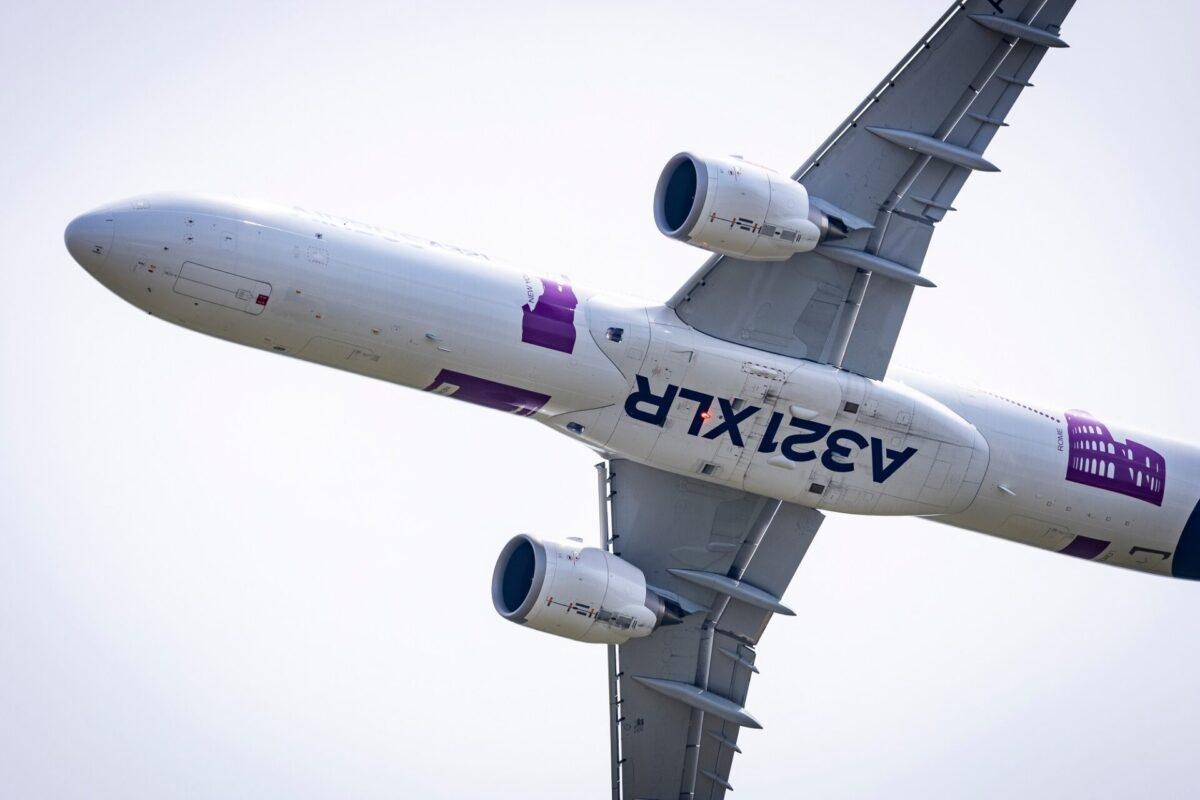
IndiGo A321XLR Delivery Timeline and Potential New Routes
IndiGo’s A321XLR Delivery Timeline and Expansion Strategy
India’s largest low-cost carrier, IndiGo Airlines, is preparing to receive its first Airbus A321XLR aircraft, now anticipated in December 2025. This new addition to the fleet is expected to significantly extend the airline’s international reach, enabling direct flights on longer routes that were previously inaccessible with its narrow-body aircraft. However, industry-wide production and supply chain disruptions pose risks to the delivery schedule, potentially affecting IndiGo’s ambitious global expansion plans.
The A321XLR, boasting a range of approximately 8,700 kilometers, will allow IndiGo to operate nonstop flights from major Indian hubs such as Delhi, Mumbai, and Hyderabad to destinations including Seoul, Athens, and Nairobi. These routes are central to the airline’s growth strategy through 2030, as it currently operates over 2,200 daily flights to more than 140 destinations across Asia, Europe, and Africa. IndiGo has placed an order for 69 A321XLRs, aiming to strengthen its presence in Europe, Northeast Asia, and East Africa.
CEO Pieter Elbers has described the A321XLR as a critical link between the airline’s existing A321neo fleet and its forthcoming long-haul Airbus A350 services, scheduled to commence in 2027. The extended range of the XLR model, which adds up to two hours of additional flying time, will open new markets such as Denpasar, Athens, and Nairobi, while reinforcing IndiGo’s foothold in established international sectors.
Challenges and Competitive Landscape
Despite these promising developments, IndiGo faces significant challenges. Delays in aircraft production and supply chains threaten to slow the introduction of the A321XLR, potentially postponing the launch of new long-haul routes and the planned rollout of business class services. These uncertainties have elicited mixed responses from investors, with some expressing concern over the impact on the airline’s expansion timeline, while others remain confident in IndiGo’s long-term growth prospects.
Competition is intensifying, notably from carriers such as Aegean Airlines, which is reportedly considering India for its initial A321LR routes. This emerging rivalry could affect key markets that IndiGo is targeting with its expanded fleet.
In response, IndiGo is advancing a multi-hub strategy designed to optimize fleet utilization and operational efficiency. Mumbai is positioned as the gateway to West Asia, Delhi will focus on Central Asia, and Hyderabad will support niche domestic and regional routes. This approach is intended to sustain and enhance the airline’s long-haul services.
To further strengthen its international network, IndiGo has established partnerships with major global airlines including Delta, Air France-KLM, Virgin Atlantic, and Japan Airlines. These alliances, facilitated through codeshare agreements, will extend IndiGo’s connectivity to over 30 cities across Europe and North America. Additionally, the airline has increased its order for wide-body Airbus A350s and plans to introduce Boeing 787 aircraft, diversifying its fleet and enabling direct service to high-demand long-haul destinations.
Leveraging India’s strategic geographic location—where 65% of the world’s population is within a five to six-hour flight—IndiGo aims to reduce dependence on foreign hubs and develop a self-reliant medium- and long-haul network. While supply chain delays present tangible obstacles, the airline remains focused on transforming its international connectivity and establishing itself as a globally competitive carrier.
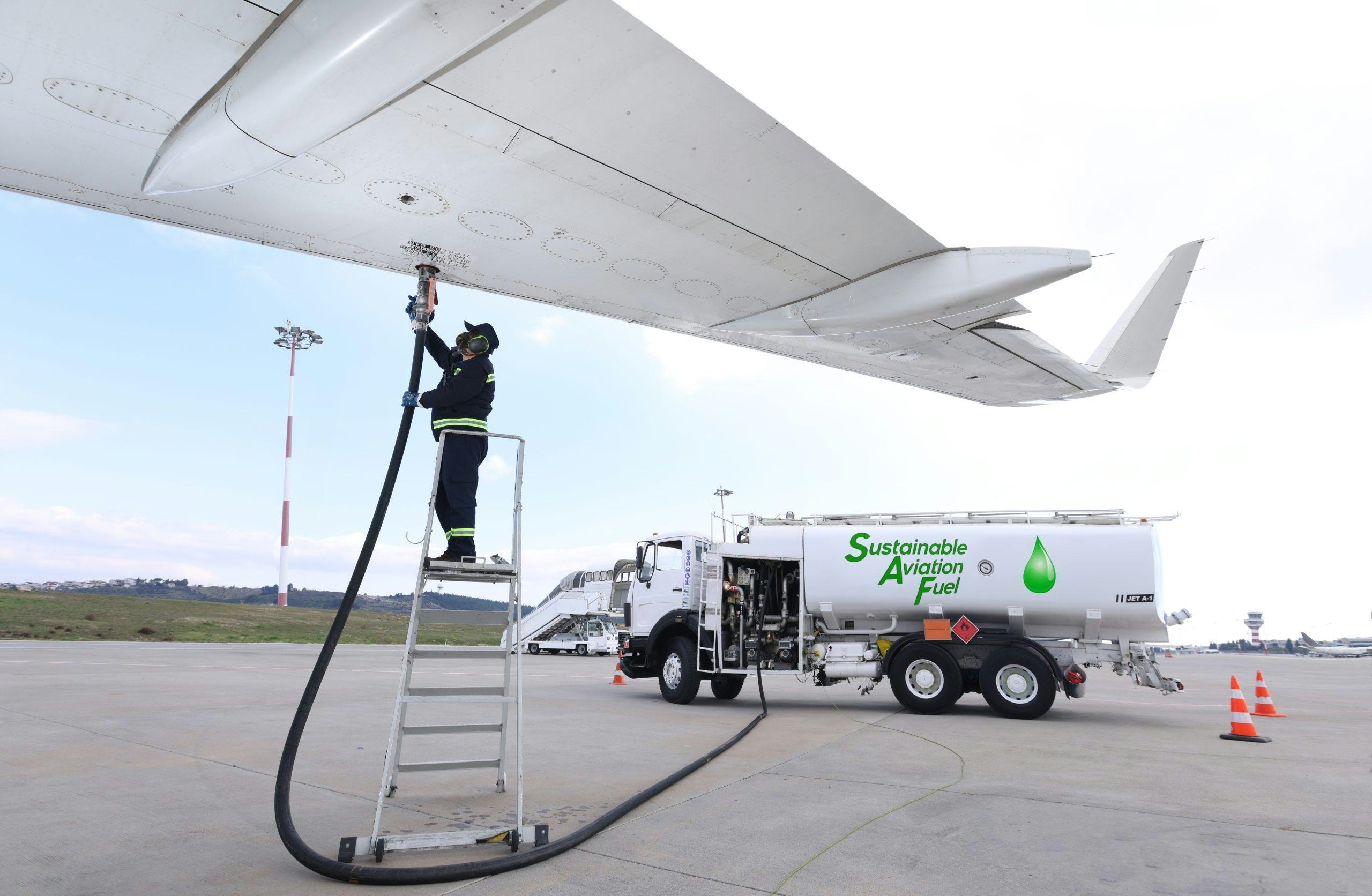
Sustainable Innovations Drive Growth in Aviation Fuel Market Amid Rising Air Travel Demand
Sustainable Innovations Drive Growth in Aviation Fuel Market Amid Rising Air Travel Demand
The global aviation fuel market is witnessing significant expansion, driven by increasing air travel demand and a growing focus on sustainable innovations. A recent report by DataM Intelligence indicates that the market was valued at US$ 211.5 billion in 2023 and is expected to reach US$ 599.1 billion by 2031. This growth corresponds to a compound annual growth rate (CAGR) of 13.9% between 2024 and 2031, underscoring the sector’s robust trajectory.
Market Dynamics and Industry Response
The aviation fuel market comprises the production, distribution, and sale of fuels used by commercial, military, and private aircraft. It includes traditional jet fuels such as Jet A and Jet A-1, alongside a rapidly expanding segment of sustainable aviation fuels (SAFs). The market is segmented by fuel type—conventional and sustainable—and by aircraft category, encompassing commercial, private, and military sectors.
Several factors are propelling this growth. The surge in global air travel demand remains a primary driver, complemented by increasingly stringent environmental regulations aimed at reducing carbon emissions. Advances in fuel efficiency and a heightened emphasis on sustainability further contribute to market expansion. Nevertheless, the industry faces challenges including intensified regulatory scrutiny related to aviation safety and economic uncertainties such as fluctuating fuel prices and global economic instability.
In response, leading companies including Atmosfair, Shell Aviation, World Energy, Neste, Gevo Inc., Honeywell International, Johnson Matthey, Exxon Mobil, Chevron, and BP are investing heavily in sustainable solutions. Their strategies emphasize new product development and technological innovation to capture emerging market opportunities and address environmental imperatives.
Notable recent developments illustrate this shift towards sustainability. In May 2023, Honeywell International introduced a technology that produces lower-carbon aviation fuel by combining green hydrogen with carbon, marking a significant advancement in reducing aviation emissions. Similarly, Gevo, Inc. entered into a master services agreement with McDermott International in July 2023 to facilitate the development of multiple SAF production facilities across North America, reflecting the industry’s commitment to scaling sustainable fuel capacity.
Market reception to these innovations has been largely positive, with sustainable aviation fuels and agricultural conservation practices gaining prominence as preferred solutions for greener aviation. Competitors are anticipated to prioritize SAF adoption and invest in innovative aircraft technologies to comply with evolving regulatory frameworks and meet consumer expectations.
Regional Outlook and Future Challenges
The report examines six key regions: North America, South America, Europe, Asia Pacific, the Middle East, and Africa. North America and Europe currently lead in the adoption of sustainable aviation fuels, while the Asia Pacific region is experiencing rapid growth in both air travel and fuel demand.
Despite the optimistic market outlook, the aviation sector must contend with ongoing challenges. Regulatory complexities, economic volatility, and the need for more effective policies to encourage competition and innovation in aircraft technology remain significant obstacles. The absence of robust market competition and supportive policy frameworks could impede the pace of sustainable transformation within the industry.
As the aviation fuel market continues to evolve, sustainable innovations and regulatory compliance will remain central to its growth. Industry leaders are strategically investing in SAFs and advanced technologies to balance the rising demand for air travel with environmental responsibility and economic resilience.
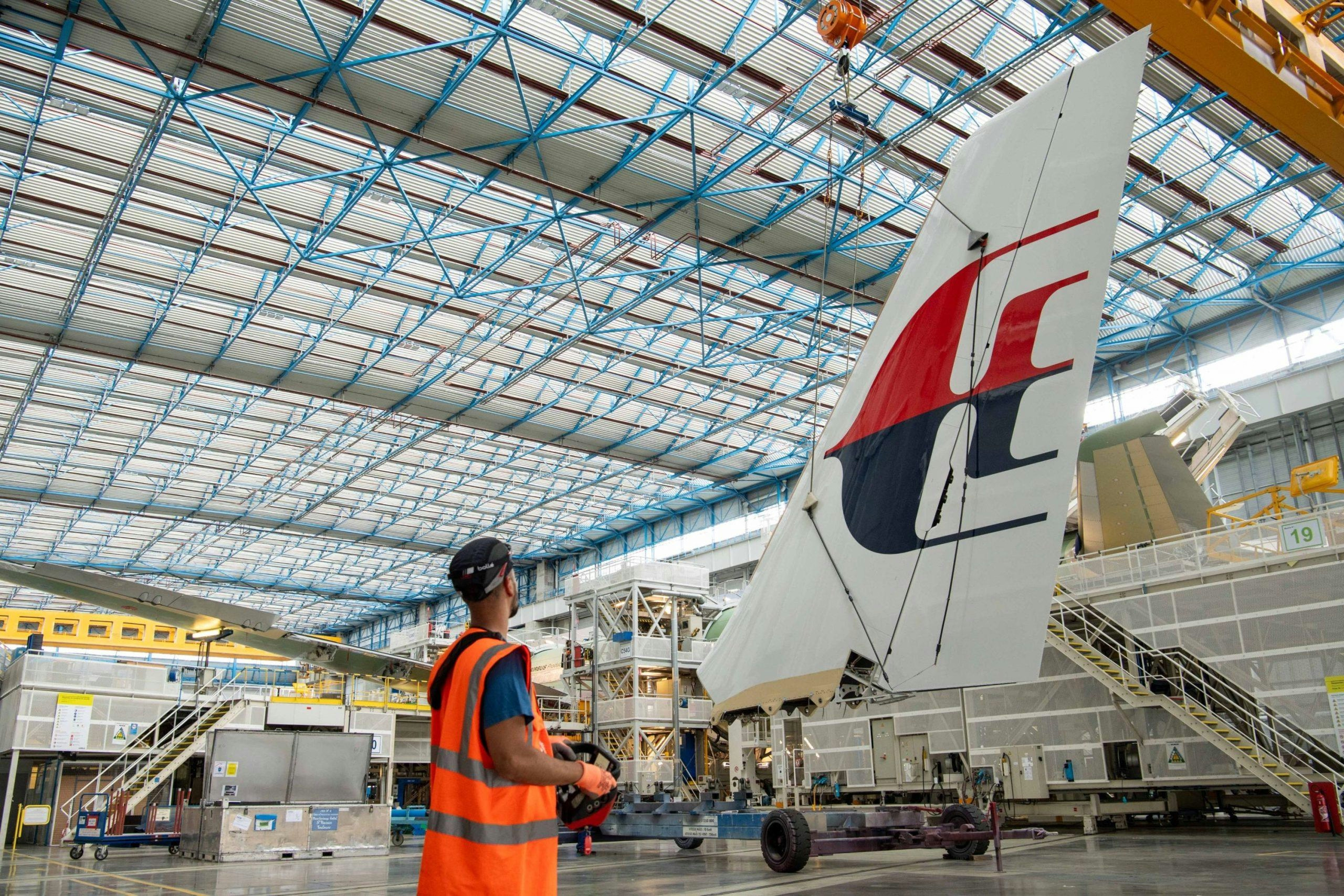
Sources: Airbus Close to Securing A330neo Order from Malaysia
Airbus Poised to Secure Additional A330neo Order from Malaysia Airlines
Malaysia Airlines, which previously committed to acquiring 20 Airbus A330neo widebody jets as part of its long-haul fleet modernization, is reportedly nearing an agreement to place a fresh order for more of the fuel-efficient aircraft. Sources cited by MSN News indicate that the announcement could coincide with Malaysian Prime Minister Anwar Ibrahim’s forthcoming visit to Paris, signaling a significant development in the airline’s fleet renewal strategy.
The airline took delivery of its first A330neo in December 2024, with the initial batch of 20 aircraft scheduled for delivery through 2028. The A330neo is noted for its approximately 14% reduction in fuel consumption compared to its predecessor, a factor that has contributed to its growing popularity among long-haul carriers. Since its introduction, the aircraft has demonstrated robust operational performance and commercial appeal, with Airbus highlighting its capabilities through high-altitude trials and attracting a diverse range of new customers globally.
Malaysia Airlines’ Fleet Modernization Efforts
Malaysia Airlines has maintained a longstanding relationship with Airbus, having previously operated six A380 superjumbos. According to Planespotters, the airline currently operates a fleet comprising 24 older A330s, seven A350s, and 50 Boeing 737s with an average age of less than ten years. The broader Malaysia Aviation Group (MAG), which includes subsidiaries such as Firefly, MASwings, and MASkargo, manages a total fleet of 107 aircraft. MAG has articulated ambitions to expand its fleet of 62 narrowbody and 52 widebody aircraft over the next decade, with ongoing deliveries of Boeing 737 MAX 8s expected to reach 20 units by 2026.
MAG Group Managing Director Datuk Captain Izham Ismail described the arrival of the first A330neo as a “transformative moment” for the airline, underscoring its commitment to innovation, passenger comfort, and sustainability. The new A330neo cabins are designed to offer increased space, larger overhead bins, and upgraded WiFi and in-flight entertainment systems, promising an enhanced travel experience alongside operational efficiencies.
Industry Context and Competitive Dynamics
Airbus continues to face challenges related to production efficiency and supply chain disruptions as it seeks to enhance the A330neo’s capabilities, including plans to increase its maximum take-off weight. Securing an additional order from Malaysia Airlines would bolster Airbus’s position in the competitive long-haul aircraft market, particularly against its primary rival, Boeing.
In response to rising demand, Boeing is accelerating production of its 787 Dreamliner and 777X models, targeting key customers such as ANA and Vietjet. Meanwhile, new entrants like Saudi Arabia’s Riyadh Air have placed substantial orders, including up to 50 Airbus A350-1000s, highlighting the intensifying competition for long-haul aircraft contracts.
A Strategic Move for Malaysia Airlines
For Malaysia Airlines, the prospective A330neo order forms part of a broader strategy to recover from years of financial difficulties and fleet restructuring, which included the retirement of its iconic A380 superjumbos. The airline’s investment in modern, fuel-efficient aircraft is expected to generate cost savings and improve the passenger experience, supporting its efforts to restore stability and competitiveness within the global aviation sector.
Ask AeroGenie